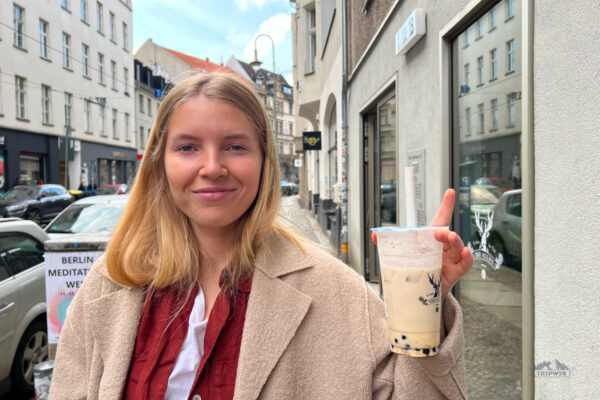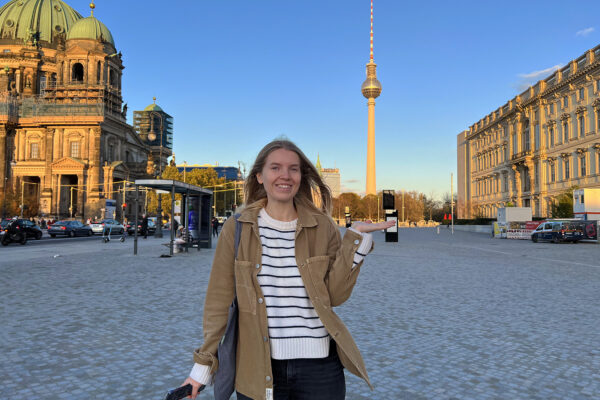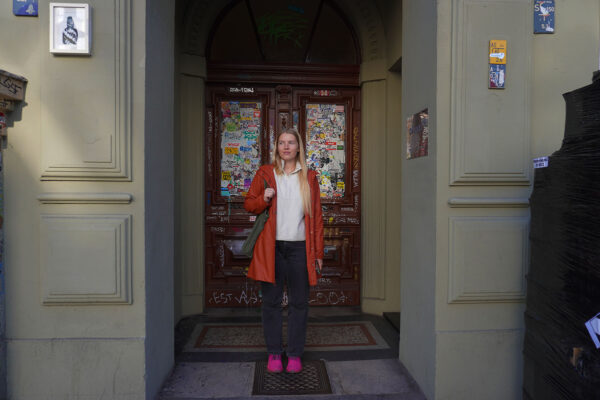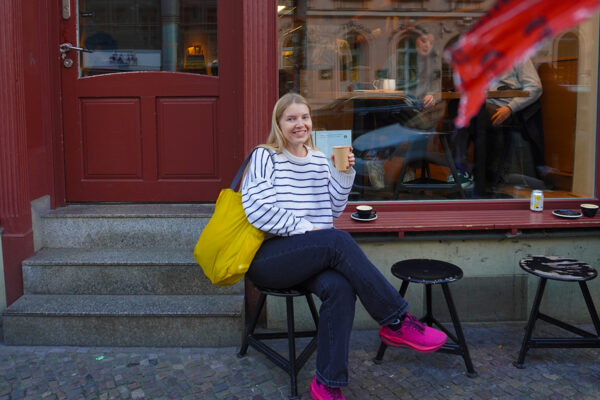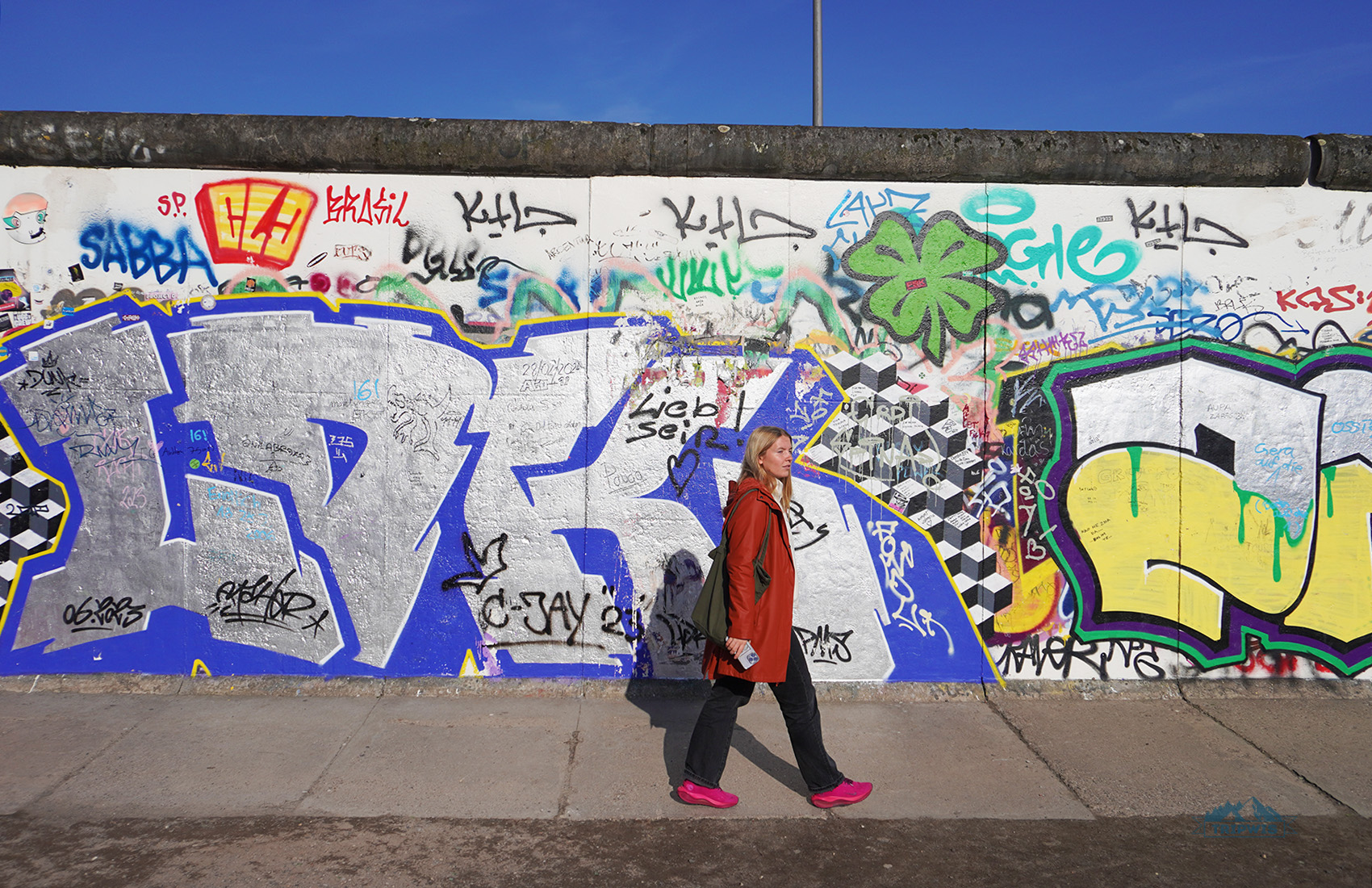
From concrete walls to secret tunnels, from political power plays to sheer resiliency of spirit, — Berlin holds on to its history, no matter how cruel and hard the memories are.
We’ve been to the city multiple times, and, even though our itineraries aren’t specifically focused on Cold War Era landmarks, we always make time to pay a visit to a few most notable locations. To help you plan your visit better, we have created our personal guide to must-see Berlin’s Cold War locations — grab a pen, there’s a lot to take in!
Article contents
- Where to find Cold War sites in Berlin?
● East Side Gallery
● DDR Museum
● Checkpoint Charlie
● BlackBox Cold War Museum
● TV Tower
● Watchtower at Potsdamer Platz
● Palace of Tears (Tränenpalast)
● Brandenburg Gate
● Stasi Museum - Berlin Wall and places to see it
- Things to know before traveling to Berlin
Cold War Era in Berlin
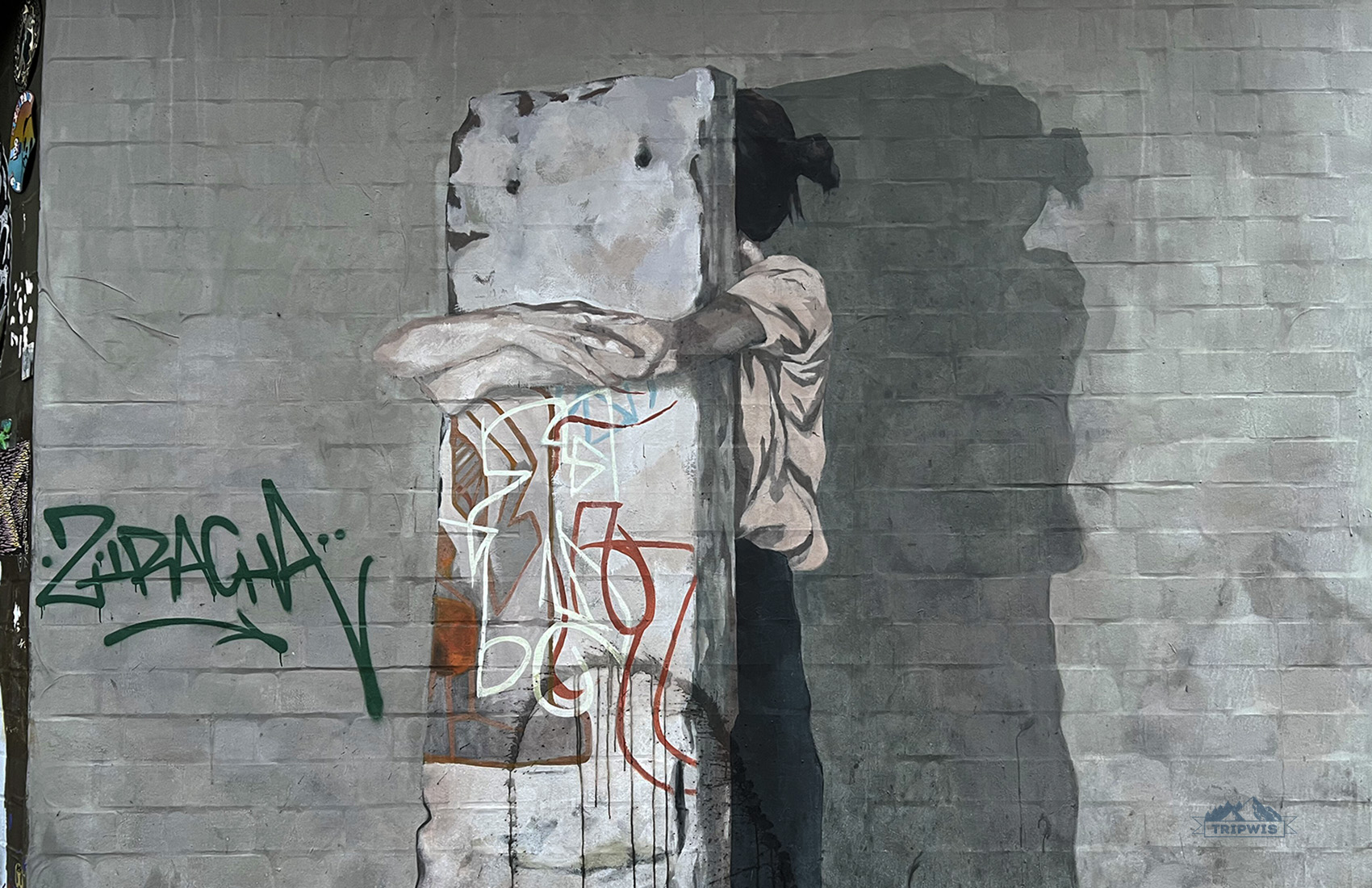
There is lots of Cold War street art in Berlin!
Before we dive into the must-visit Cold War locations in Berlin, let’s brush up a little on our history facts:
- The Cold War was an ongoing political rivalry between the United States and the Soviet Union and their respective allies that lasted between the end of World War II and the fall of the Soviet Union.
- In Germany, Berlin was divided into two parts by the wall: East Berlin, controlled by the USSR, and West Berlin, controlled by the British, French and Americans.
- The war was waged mainly on political, economic, and propaganda fronts, without much use of weapons. However, there was a nuclear crisis of October 1962 when the United States and the Soviet Union came closest to nuclear conflict.
East and West Berlin
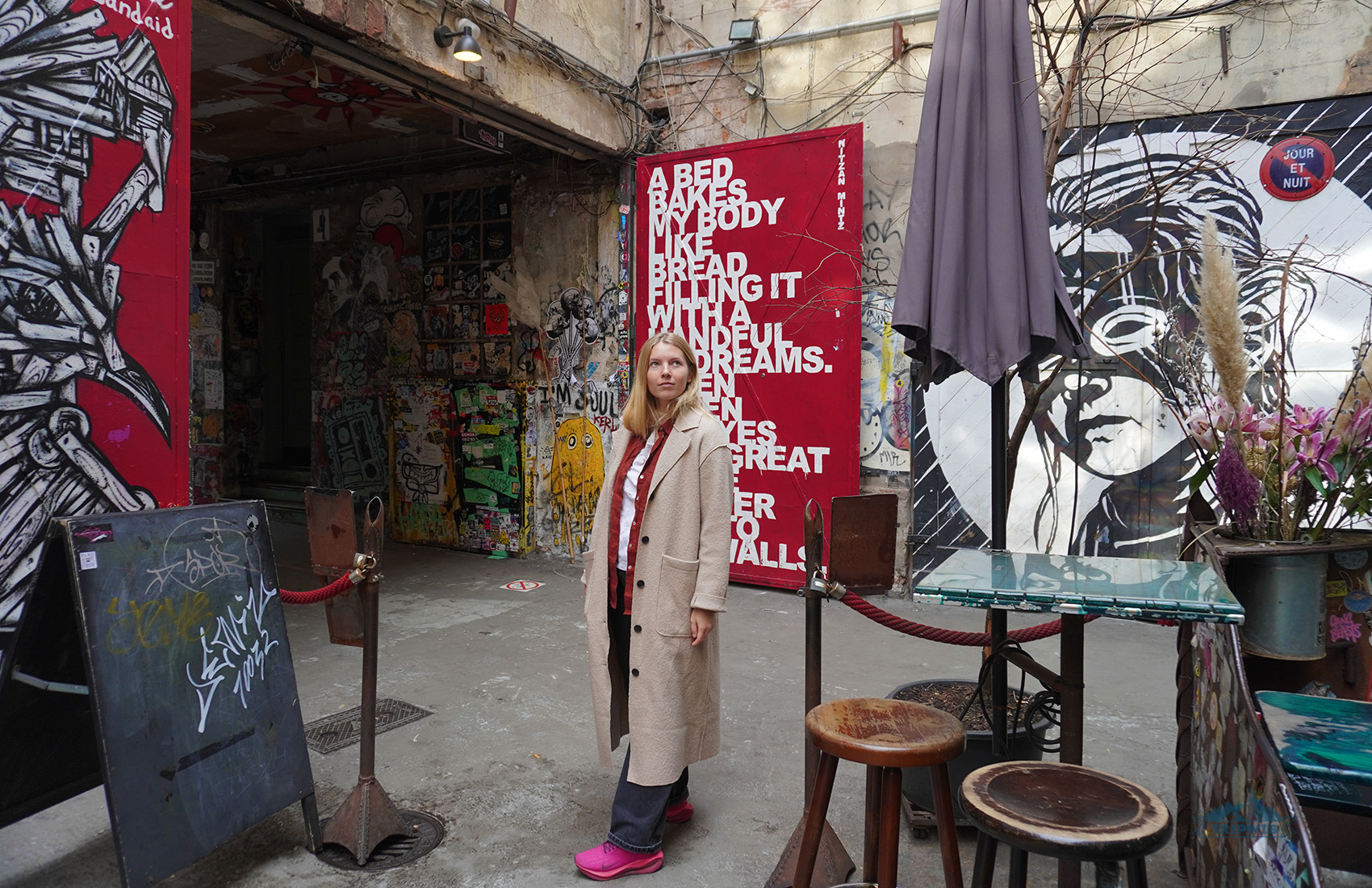
This is a quirky passage behind Haus Schwarzenberg — check it out if you’re in Mitte neighborhood
As the story goes, the construction of the Berlin Wall made life for Berliners to be divided into before- and after-the-wall.
Those living in West Berlin were practically stranded on an island, surrounded by East Berlin on all sides. Prevailing communism of East Berlin stood against the capitalism of West Berlin: A real study in contrast that lasted longer than it should have. Life in West Berlin was way easier. There was, at least, complete freedom of movement, which is something East Berliners could only dream of, existing under a watchful eye of Stasi — the regime’s secret police force.
There were many attempts of those in the East to escape to the West using all and every method possible — there was even a case of people flying over the Wall in a hot air balloon.
Even though Berlin is unified now, some experts say that the consequences of the separation still linger, even a whole generation later. There’s something in the air that changes when you cross the line where the wall used to be. Or maybe it’s all the facts we learned on numerous tours we took during our visit to Berlin making us imagine things. Come here and see for yourself!
Where to find Cold War sites in Berlin?
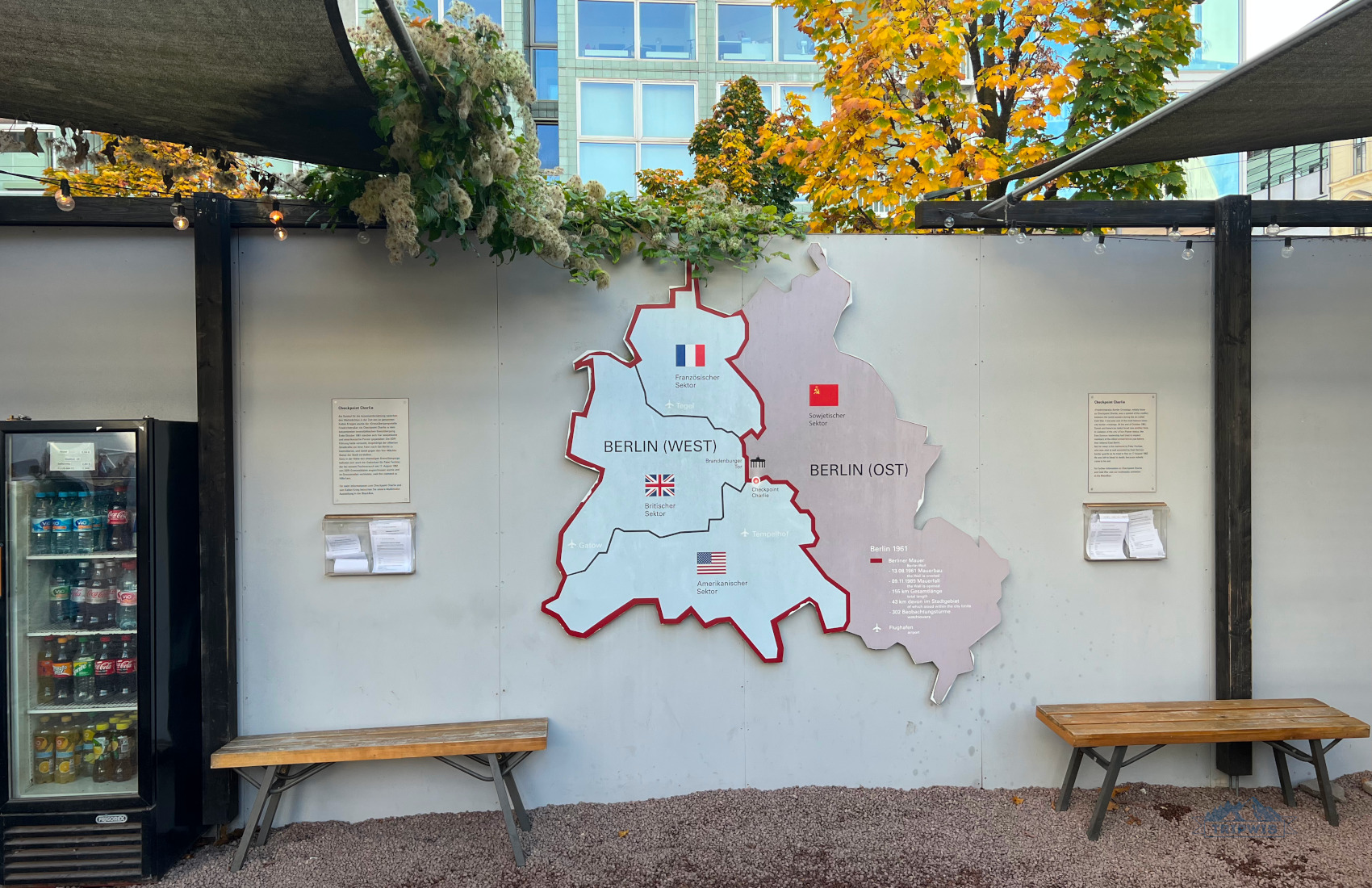
After the Wall fell and Berlin became officially reunified, there was a need for its citizens to document the hardships of the time they spent divided. So museums, memorials, and monuments were created to transmit the lessons learned from major Cold War events in Berlin to future generations.
There are plenty of historical sites worth visiting — both Cold War and WWII sites in Berlin. We’ve compiled a list of some of them we found most crucial to Cold War history.
East Side Gallery
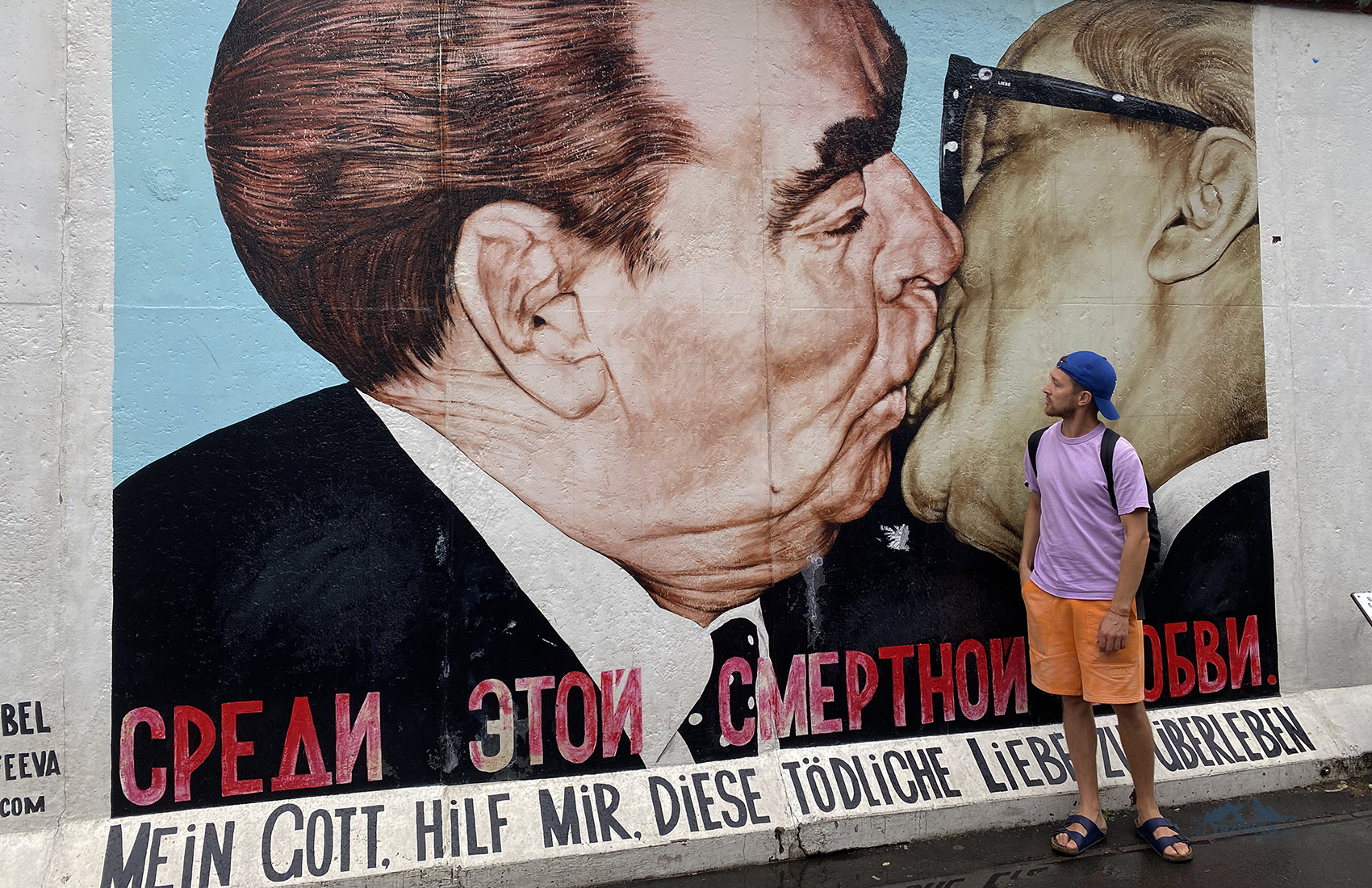
I guess, it’s the most well-known picture on the walls of the gallery
Let’s start off strong: Who here hasn’t heard about the East Side Gallery? A true testament to resilience, rebirth, and unity, this stretch of the Berlin Wall is a must-see attraction even if you’re in Berlin for one day only.
- At 1,316 meters long, the East Side Gallery is the longest permanent open-air gallery in the world.
Figuratively put on the map by the image of the good old “Fraternal Kiss” (official name “My God, Help Me To Survive This Deadly Love”), the gallery is actually a host to more than a hundred paintings on what would be the east side of the Wall. Though usually very crowded, we encourage you to stick around the main art piece and wait for a chance to take a picture in front of Erich Honecker and Leonid Brezhnev sharing a passionate kiss.
The murals you see on this part of the Berlin Wall were part of social commentary of the world’s political changes. Wasting no time after the collapse of the wall, over one hundred artists from more than 20 countries came together to create the most unifying work of art you could ever imagine. Other notable works here include Birgit Kinder’s mural of a car (Trabi) breaking through the wall (“Test the Rest”).
Opened on September 28, 1990, there was a notable restoration of the wall in 2009 which sparked many debates on the subject of artists being asked to help restore their own murals while not being adequately compensated, some works being erased or losing the original integrity, etc. Now the gallery has been taken under the wing of Stiftung Berliner Mauer (SBM), which makes sure that the works of art stay well-preserved even when exposed to outside elements 24/7.
Sitting on the banks of the capital’s main waterway — the Spree River — East Side Gallery is one of the few free Cold War sites to visit in Berlin, and one of the rare cases when the tribute to this difficult time is presented in such a hopeful and bright light.
- Taking all of this into account, we would strongly advise you start your expedition right here, by the water, inside one of Berlin’s most happening neighborhoods — Friedrichshain (just a bridge away from our favorite area in the city — Kreuzberg).
Fun fact: Painted sections of the Berlin Wall are scattered all over the globe, and not just in Berlin! Brussels and New-York are the most notable locations, but you can see the parts in some iconic destinations of Africa and Australia as well. Last time we found one in… Tirana (capital of Albania)!
While we delve deeper into all things Berlin Wall further down in the article, it’s also a good idea to dedicate some time to learn more factual information about the attraction offline, and right on site! To do that, make sure to check out the Berlin Wall Museum adjacent to the East Side Gallery. It has various video and audio installations that make learning historical facts much more interesting.
📍 A tour that might ‘click’: 2.5-Hour East Side Boat Cruise with Commentary
📍 Nearby attractions: Molecule Man sculpture, Uber Arena, Oberbaum Bridge
📍 Useful tips: Come early to beat the crowds; respect the works of art; don’t forget your camera
📍 Where to stay nearby: 3* Hampton By Hilton Berlin City East Side Gallery (from €152 a night)
DDR Museum
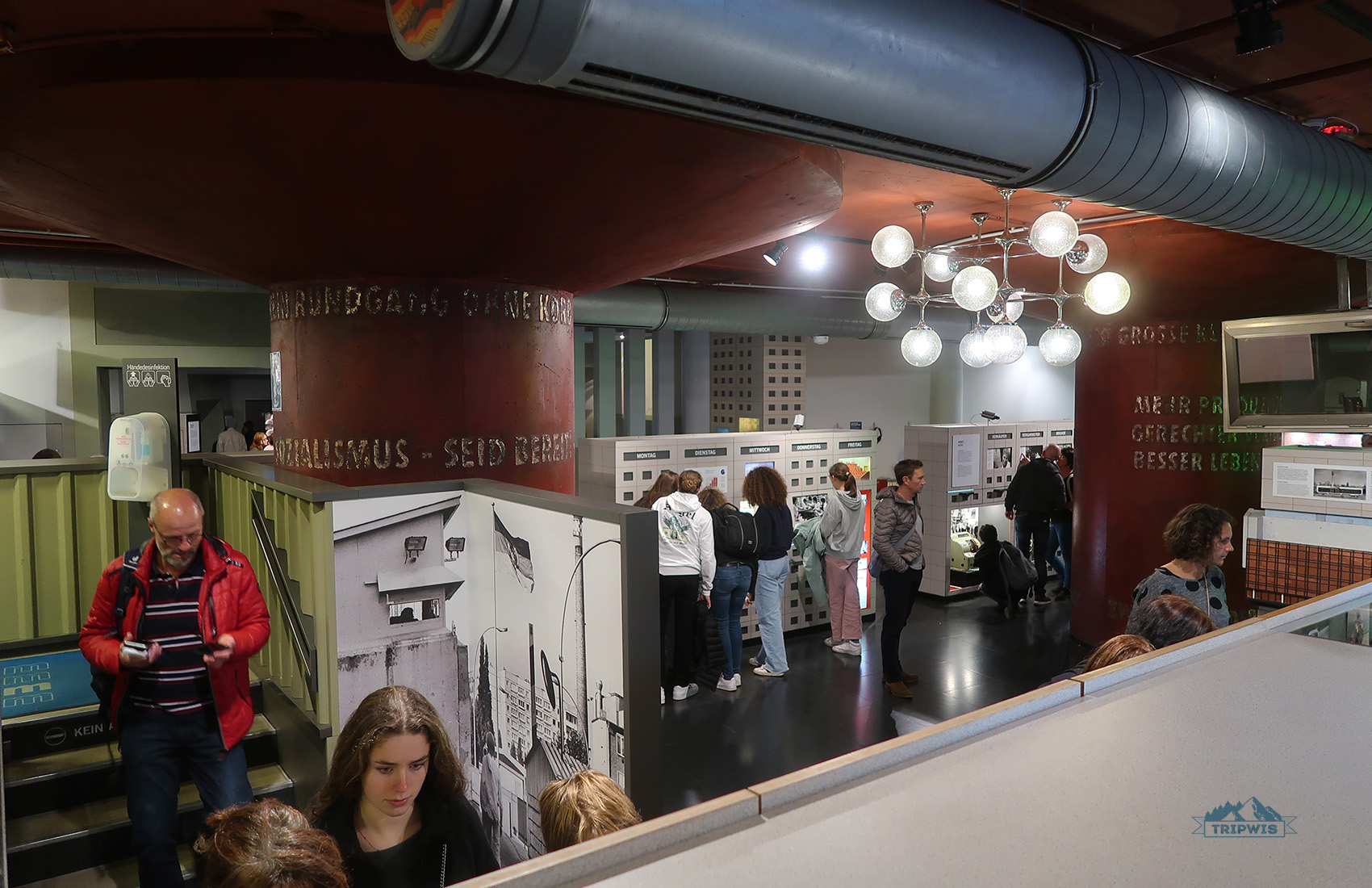
DDR Museum in Berlin is the closest you can get to being a time traveler without actually bending laws of physics. But instead of jumping ahead to flying cars and Mars colonies, you go back to polyester clothing and secret police.
The DDR Museum has earned a prominent place on every traveler’s list of things to do in Berlin. The museum is famous for an extremely detailed depiction of everyday life in East Germany (then known as Deutsche Demokratische Republik or DDR), containing a full-furnished flat, an interrogation room, and a Trabi experience.
- The origin of the DDR Museum is an interesting story of one ethnologist coming to Berlin and not finding what he was looking for — a chance to immerse himself fully into the mundane routine and reality of the people who lived in East Germany during the years of the Cold War. As they say, if there’s a will there’s a way; so Peter brought his concept to life with this very exciting and unique project!
Plus, the museum’s exhibitions are interactive: Not only can you see the typical furniture and the clothes people used to wear, but you can also open drawers and push buttons on appliances. The museum is logically laid-out, with a convenient one-way walk-through system and tons of information you can get from all kinds of displays. It is an engaging experience for all age groups with the cherry on top being the Trabant area where you can get inside and even “drive” the peculiar car through the 3D simulation of East Germany.
📍 Opening times: Daily; 9 a.m. – 9 p.m.
📍 Ticket price: €13,50 per adult; €8 for a reduced ticket; kids under 6 enter for free
📍 Nearby attractions: Museum Island, Berlin Cathedral, Berlin TV Tower
📍 Useful tips: Book your tickets in advance via GetYourGuide to avoid long lines to the ticket booth; fuel up with yummy cookies from Round & Edgy — a small bakery within a ten-minute walk from the museum; though it’s not that expensive, allot at least two hours for your visit; the devil’s in the details and they take a long time to discover!
Checkpoint Charlie
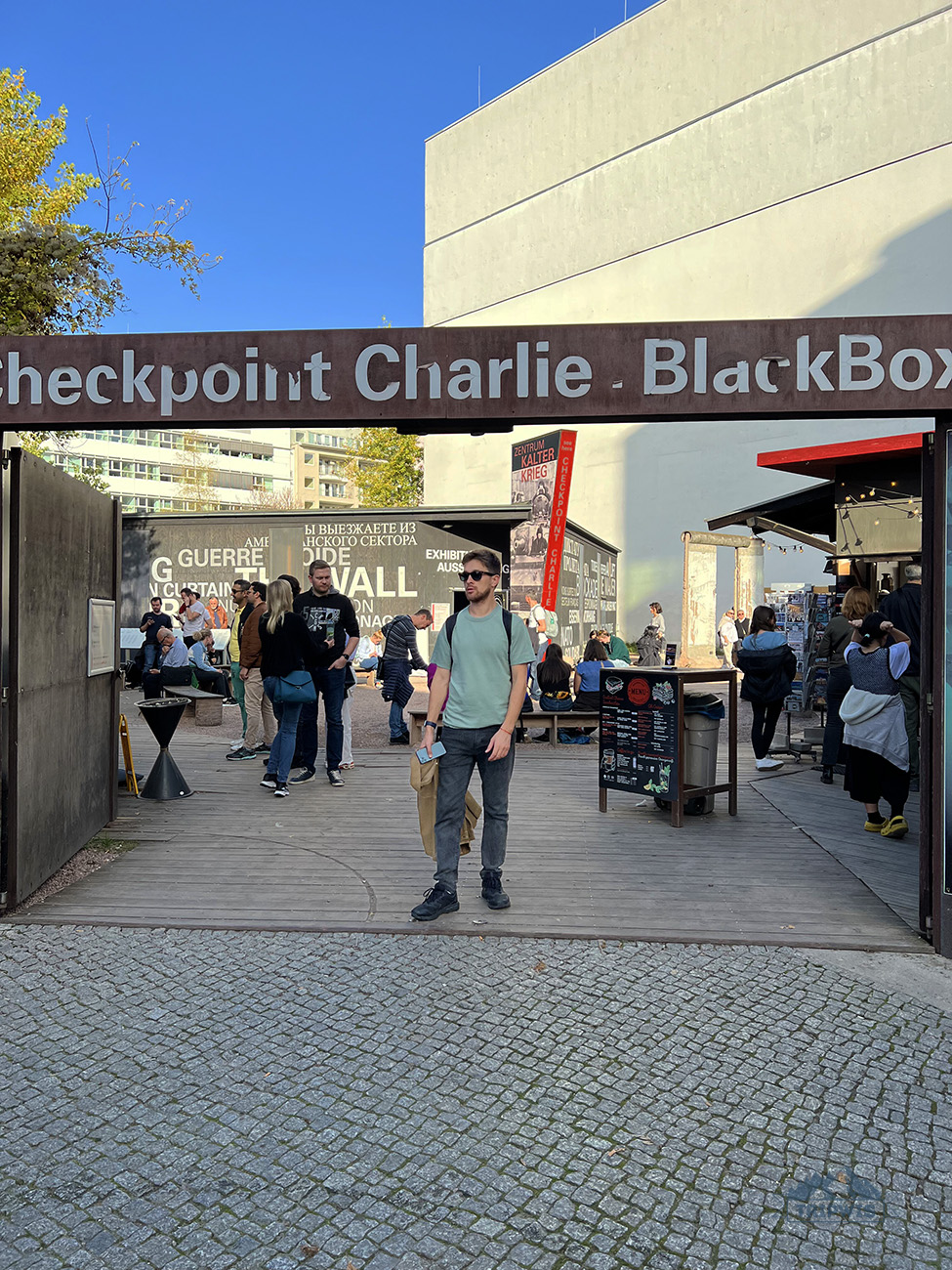 |
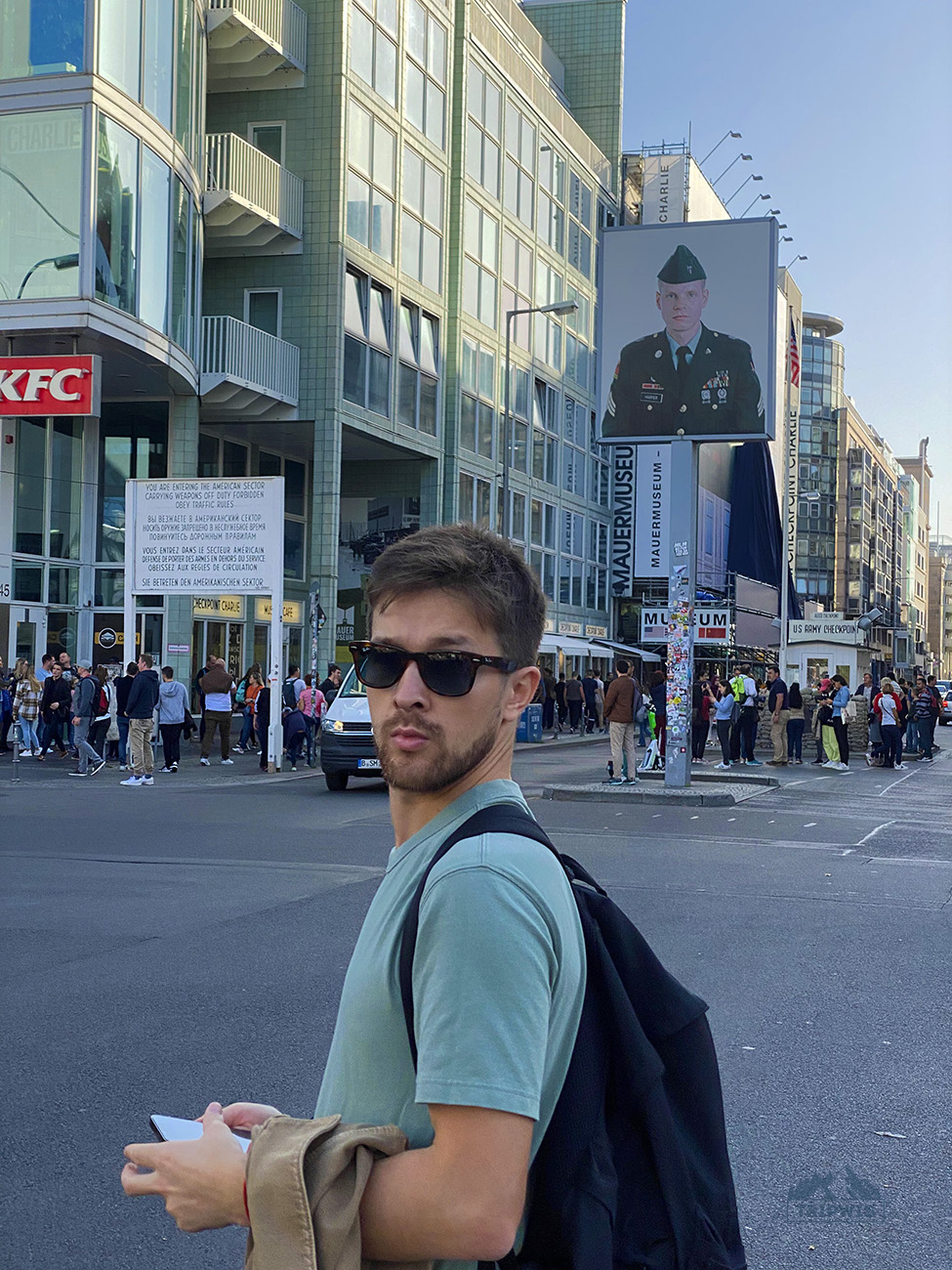 |
Checkpoint Charlie is considered to be one of the most famous of all Cold War sites due to it being so heavily exploited in cinema. From the James Bond franchise to smaller budget films, this place has become a symbol for portraying Cold War espionage rhetoric in popular culture. And who doesn’t love a good spy film?
- If you’re confused about the name, thinking you should know some famous Charlie that was somehow connected to the checkpoint, you can relax — the name stems from the NATO phonetic alphabet: Charlie (C) being the third checkpoint to be opened in Berlin after Alpha (A) and Bravo (B). Mystery solved, you’re now a spy in training!
Checkpoint Charlie used to be a designated crossing point for the Allied forces, becoming famous for the incident of October 1961, when Soviet and American troops had a showdown with tanks ready on either side of the border, in position to strike at any moment. Thankfully, there was no active confrontation, but the scene alone is chilling to imagine in your head. Now a replica of the most notable Berlin Wall crossing point between East Berlin and West Berlin is a popular spot with tourists.
Though located in a place of extreme historical importance, many visitors feel that Checkpoint Charlie doesn’t live up to the expectations of it being one of the most well-known Berlin’s Cold War locations. Situated on a small square with heavy foot and car traffic around it, Checkpoint Charlie can be a nice pit stop where you can take a few pictures with the guard shack and read a replica of the original crossing sign, but that’s pretty much it.
Other than that, the area has become a complete tourist trap with sellers of overpriced souvenirs and scam artists practically swarming the place. If you want a more in-depth look into the history of the Cold War in Berlin, we’d suggest exploring other places on our list, starting with the BlackBox Cold War Museum right next to Checkpoint Charlie.
📍 A tour that might ‘click’: Third Reich and Cold War Walking Tour
📍 Nearby attractions: BlackBox Cold War Museum, Topography of Terror, Friedrichstraße shopping street
📍 Useful tips: Avoid falling for tourist traps in the area (overpriced souvenirs aren’t what you’re looking for, trust us); visit in early morning or late evening to avoid crazy traffic.
BlackBox Cold War Museum
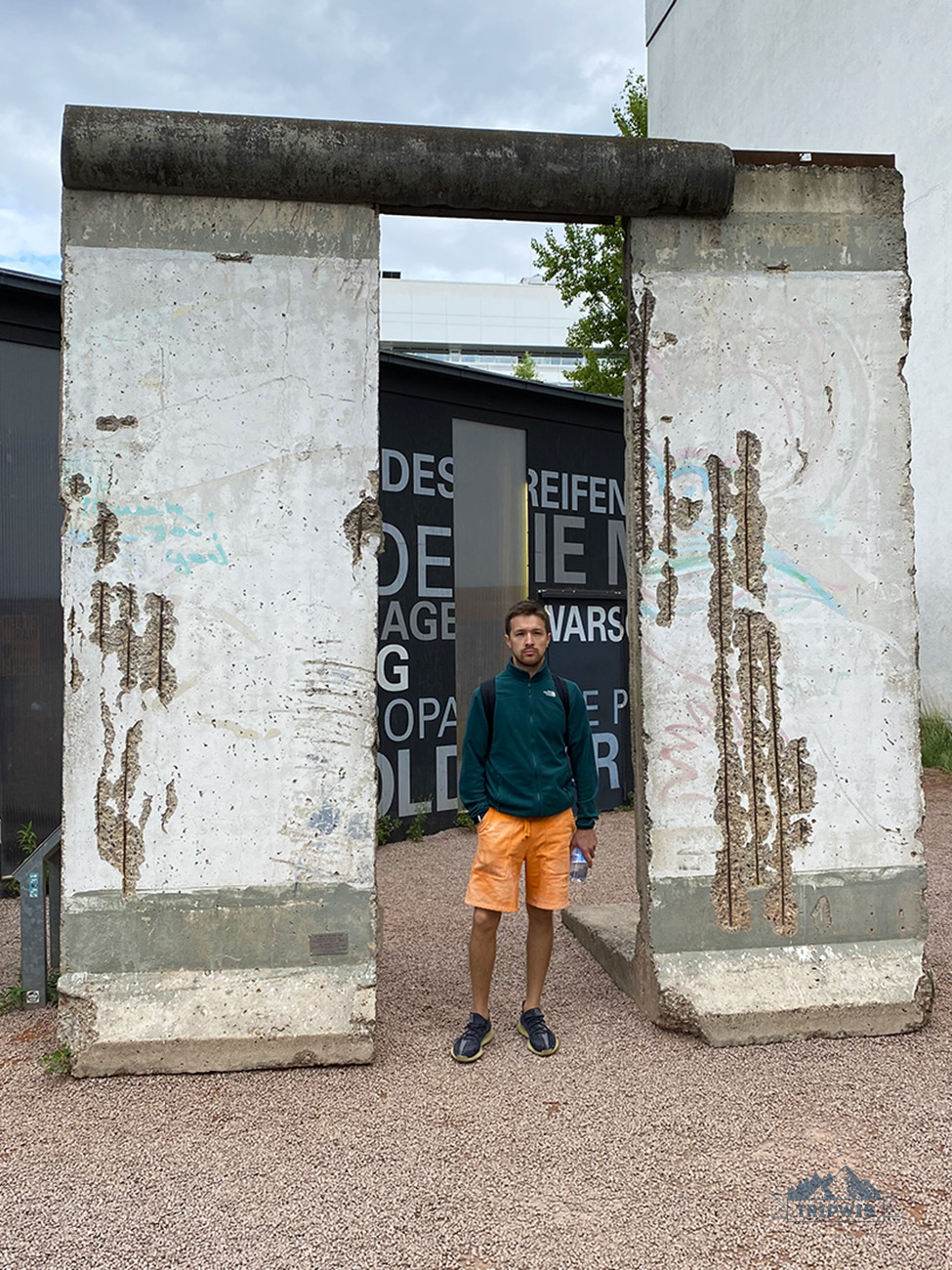 |
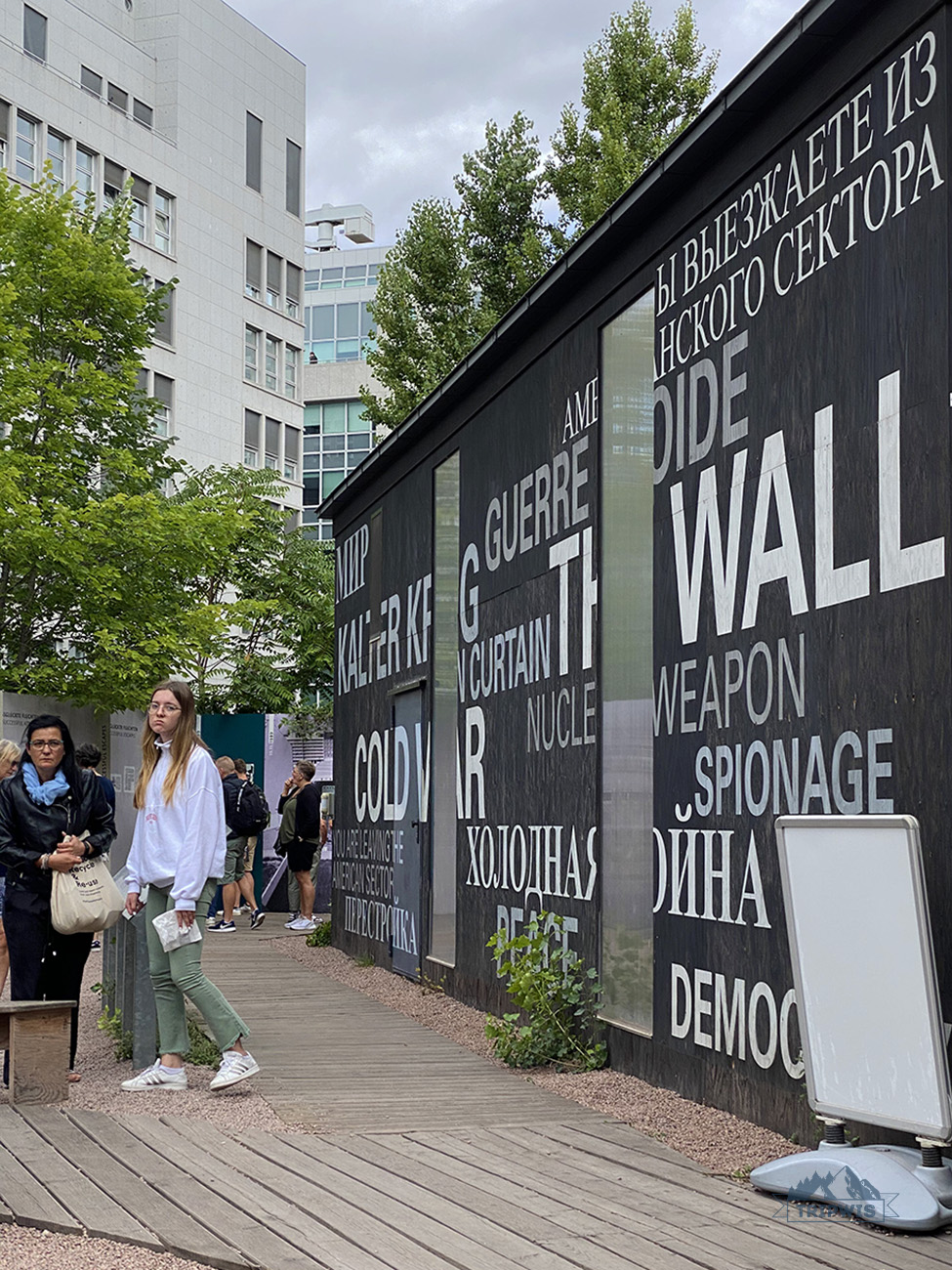 |
Pieces of the Berlin Wall are scattered all around the city
As a black box of an airplane, the BlackBox museum contains the unsettling developments of the Cold War in Berlin. The place is also shaped like a black box, making the meaning of its name twofold and that much more clever.
The exterior of the building is covered with words in different languages, fonts and sizes — Espionage, Cold War, Democracy and Peace being the ones that catch your gaze first. The entry to the museum itself costs €5, however there’s a free section outside that provides a detailed insight into the history of Berlin during the Cold War.
- There’s also a part of the Berlin Wall here with a stand explaining the landmark’s life from its inception to the eventual fall.
Inside, there’s a small exhibition with a lot of pictures, audio and video materials regarding the Cold War and its most important dates. The information is given in a very accessible manner — it’s one of the more interesting Berlin Cold War attractions for both history nerds and regular tourists who are just introduced to the period. It’s very film noir-esque, but instead of femme fatales, there are bombs, shelters, and mass surveillance.
We definitely recommend you pay a visit to the BlackBox museum; it has a relatively small exhibition that doesn’t take much time to explore, but the information you learn is extremely profound. No wonder the BlackBox museum is one of the first results to come up when you search for “Cold War museum in Germany”.
📍 Opening times: Daily; 10 a.m. – 6 p.m.
📍 Ticket price: €5 per adult; €3,50 for a reduced ticket; kids under 14 enter for free
📍 Nearby attractions: Checkpoint Charlie, Jewish Museum, Topography of Terror
📍 Useful tips: Combine with a visit to Checkpoint Charlie for the most well-rounded Berlin Cold War experience; stroll around the exhibitions outside if you don’t want to pay for a visit; the small (but mighty) outdoor section is free.
TV Tower
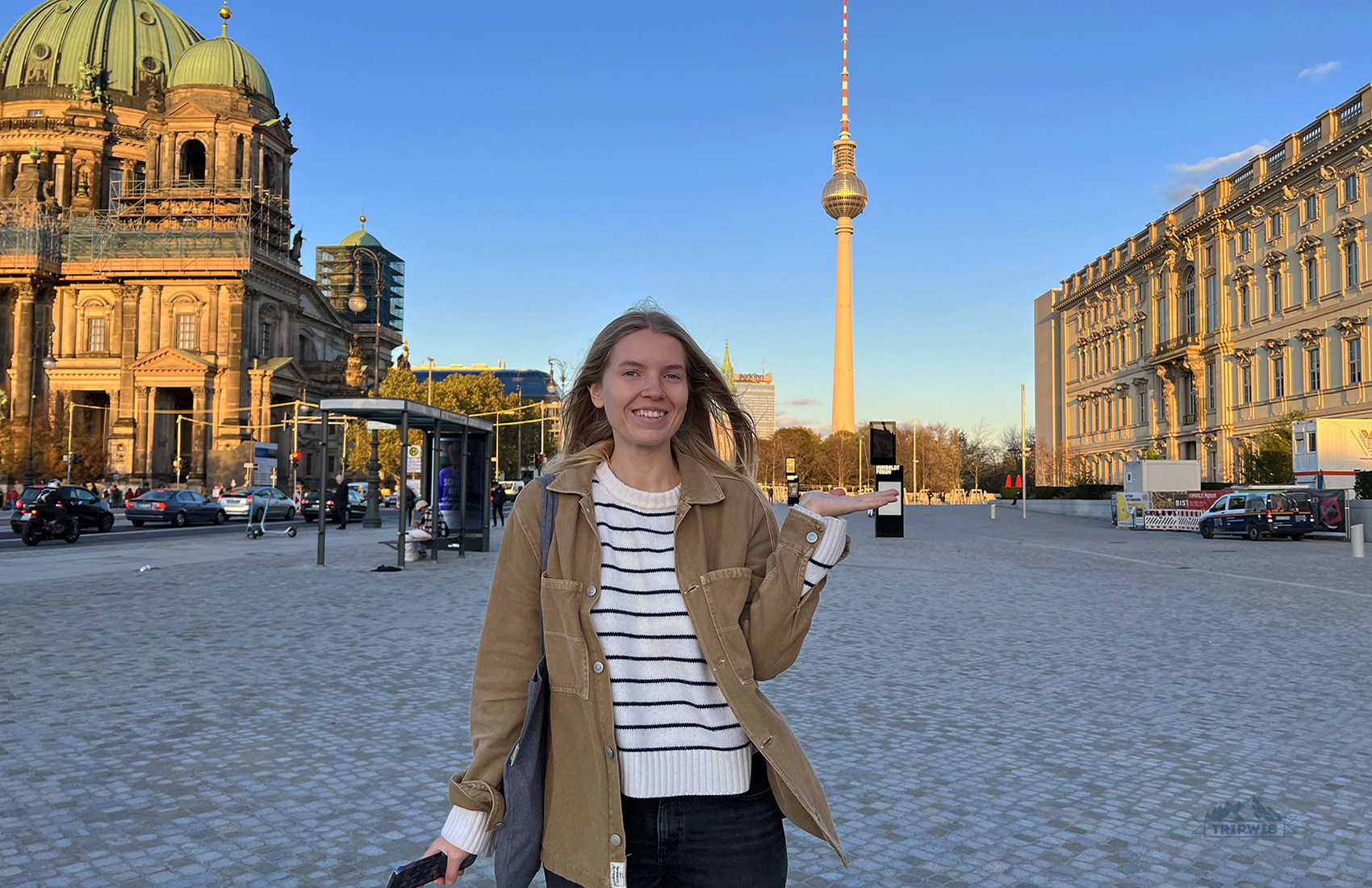
I’m wondering, if the view from above is worth the ticket…
In 1969, the TV Tower became a symbol of East Germany and the proof of communism providing a better future. At the height of 368 meters, the Tower was an architectural marvel: Even with all the years passed since then, the TV Tower is still one of the most recognized Cold War sites to visit in Berlin and an integral part of the city’s skyline.
- It’s also interesting to note that the TV Tower is the highest building in Europe open to the general public. What a treat!
Nowadays the tower is one of the most visited tourist attractions in Berlin. The observation deck, situated at the 200 meters mark, is easily accessible by elevators, though there may be a line to take a ride to the top.
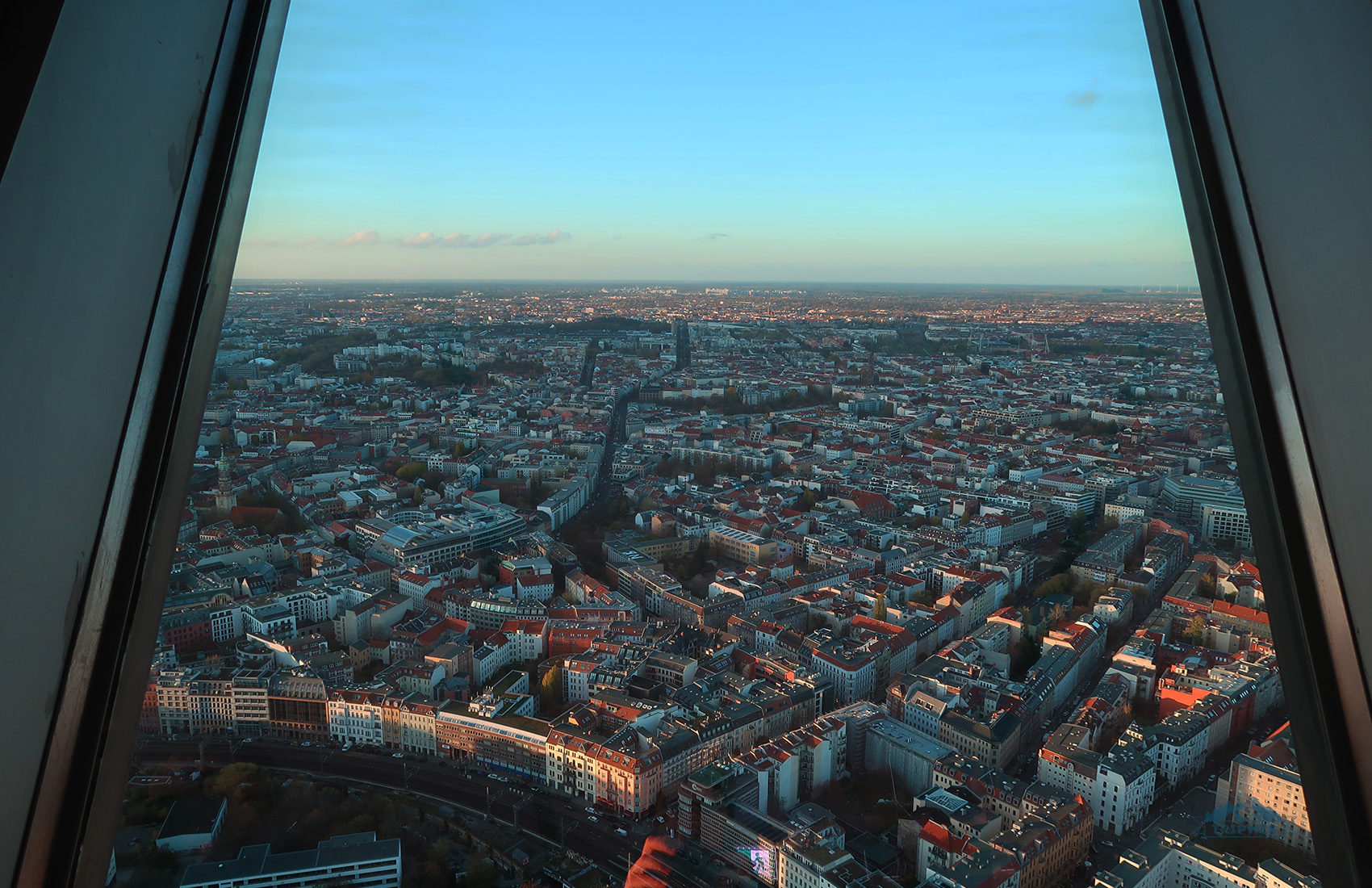
…turned out it is!
We suggest coming here earlier in the day to avoid crowds. The 360-degree view of the city is well worth the early wake-up call though! You can see the Olympic Stadium, the Reichstag Parliament building, and a bird’s eye view of the Berlin’s cityscape.
📍 Opening times: Daily; 9 a.m. – 11 p.m.
📍 Ticket price: €27,50 (online) / €30,50 (on the spot) for a standard ticket; €36,50 / €41,50 respectively — for a premium ticket (that includes the newly implemented VR experience);
📍 Nearby attractions: Alexanderplatz, Museum Island, Humboldt Forum
📍 Useful tips: Come during sunset hours for the best panorama of Berlin; book your tickets well in advance on GetYourGuide, particularly during peak tourist season in Berlin.
Watchtower at Potsdamer Platz
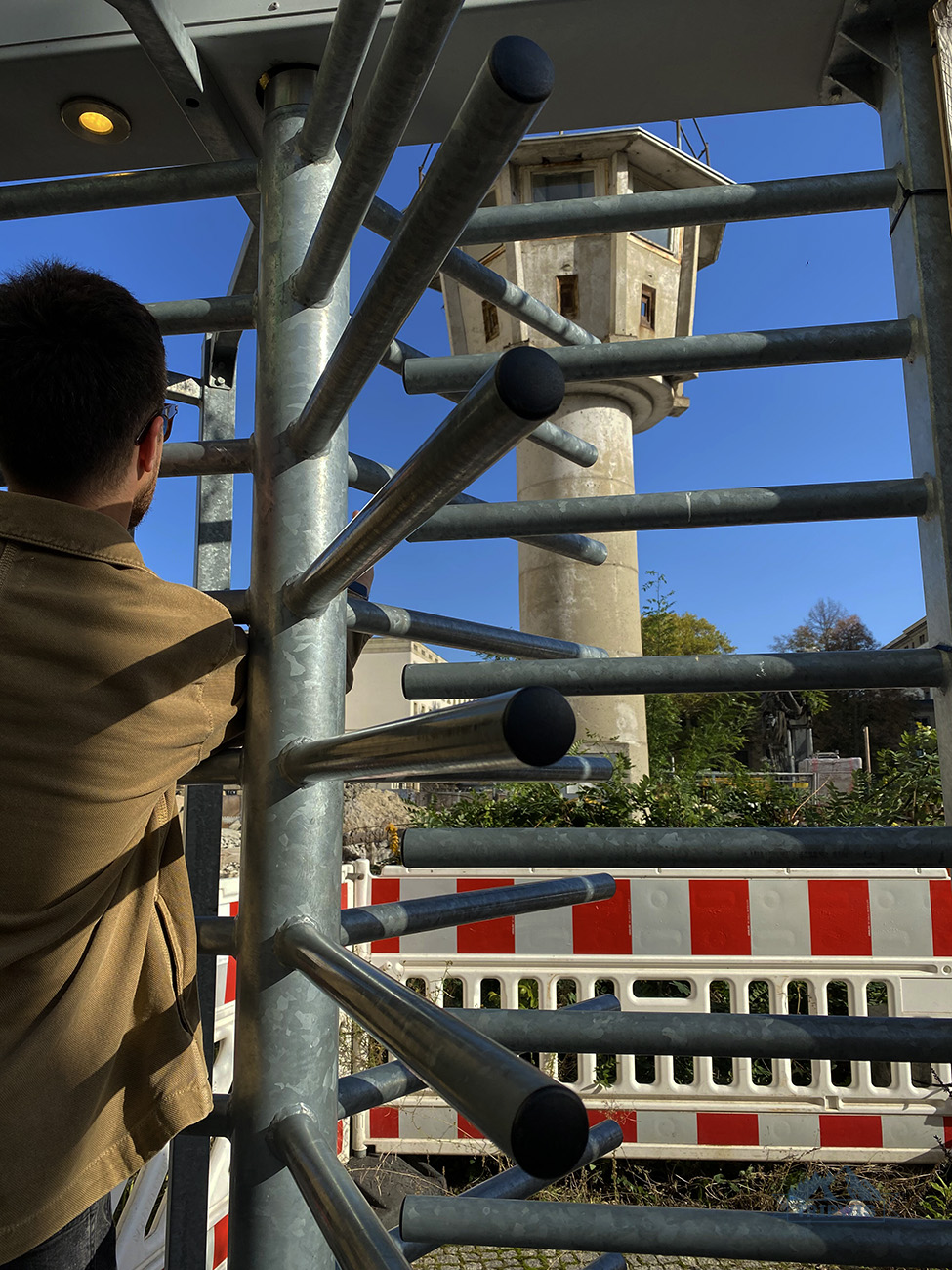 |
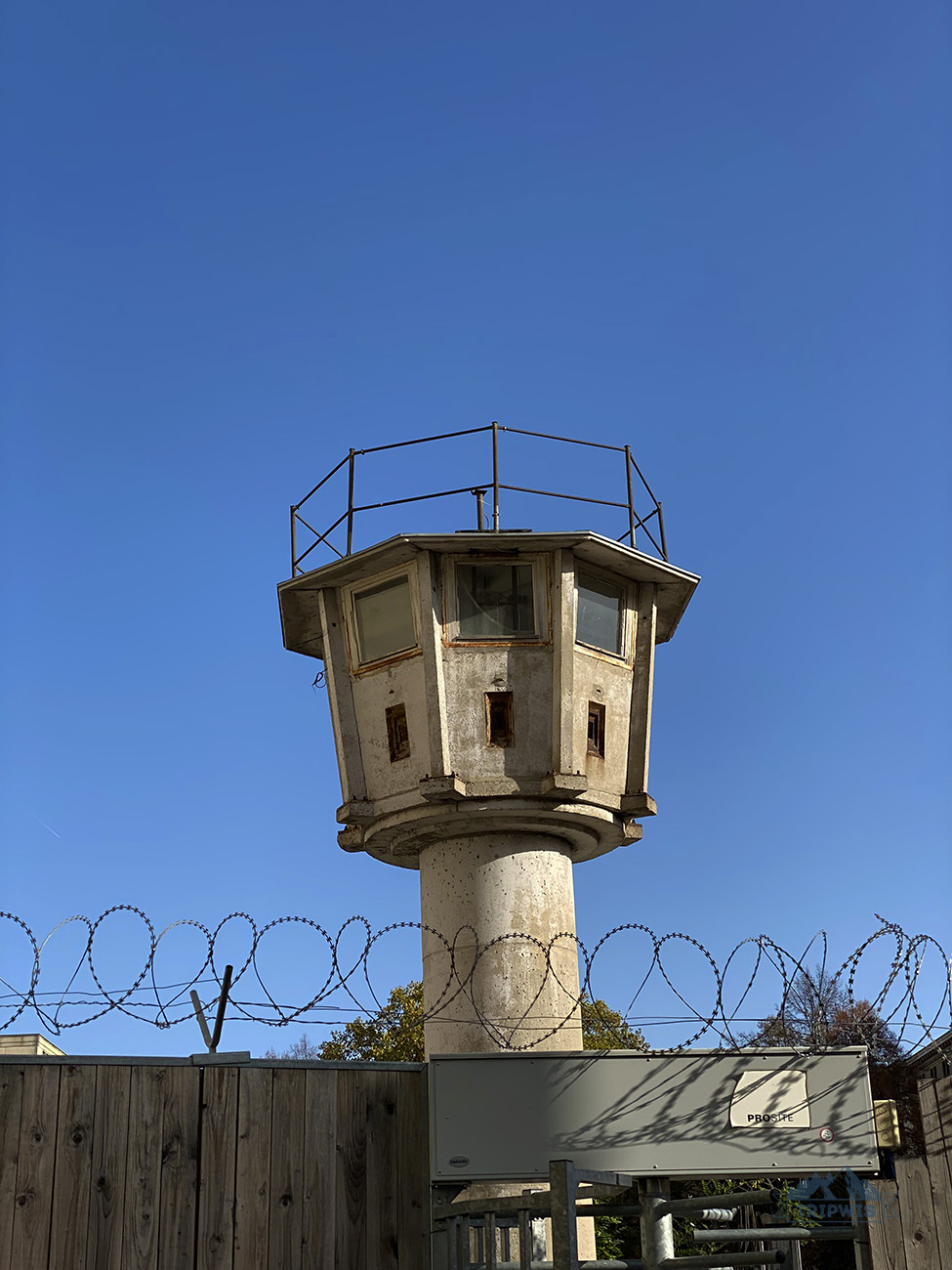 |
As of November 2025, you can’t see the watchtower as on our pictures because of the construction works!
The last remaining watchtower, the one at Potsdamer Platz, bears extreme significance as one of the most notable Cold War sites to visit in Berlin.
- During the GDR era, there were more than 300 Soviet watchtowers lined up along the Berlin wall. This tower is the last one standing today.
Always manned by two soldiers taking 8-hour shifts each, the tower had a shooting range stretched from the Brandenburg Gate to the Tiergarten. All the unofficial crossings were brutally stopped from the so-called “panoramic observation tower” by the armed border soldiers, scanning the surroundings from the tree-top level.
Built in 1971, the Tower remains in good condition thanks to the efforts of the volunteers who do the renovation projects and the fact that it is officially listed as the site of historical importance. The Soviet Watchtower remains one of the lesser-known Berlin Cold War attractions, so you can explore the place without the crowds in sight. It’s located down a quiet dead end street, a short walk away from Potsdamer Platz. Visiting the Watchtower is a nice detour to take while walking to or from Checkpoint Charlie, in our opinion.
Side note: Due to current construction works in the area, the entirety of the tower is hidden from view by scaffolding. Until the planned structure is erected (some government or office building, we’re not sure), the viewing of the tower will not be possible.
Palace of Tears (Tränenpalast)
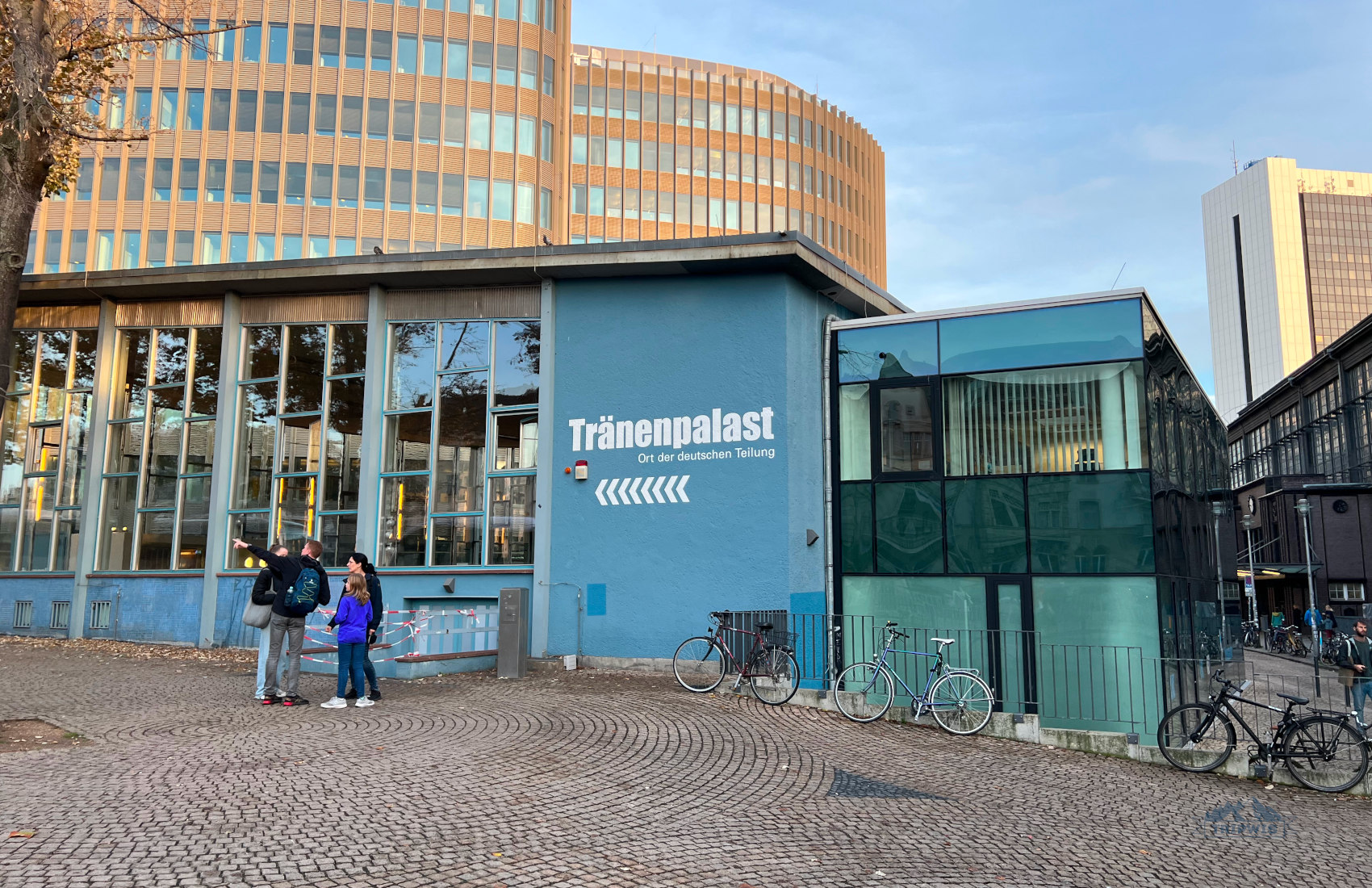
The Tränenpalast, an important border crossing during the GDR years, got its name as the Palace of Tears due to thousands of tearful goodbyes that took place inside its walls. After the Berlin Wall was built, the GDR constructed the check-in hall at Friedrichstraße railway station in 1962. The Tränenpalast was used for people crossing from East to West Berlin.
Now a museum, it is one of the most important Cold War sites to visit in Berlin due to the feelings it evokes in its guests. The exterior of the building is modern — all steel and glass — it’s scary and at the same time awe-striking. The interior of the Tränenpalast was supposed to make its users feel small and helpless, subconsciously leading them away from crossing the border — the way to the West was always dimly lit and uninviting.
If you would like to visit the Palace of Tears in Berlin, be wary that it’s a popular place for school group outings, so there might be tons of students fussing about all around during your visit. The exhibition of the museum is small but informative; you can even go through the same checkpoints all those crossing to West Berlin had to go through, including baggage and passport controls that used to be both incredibly thorough and unnerving.
The most striking part of your visit to the Tränenpalast may be the personal stories and memorabilia used in the exhibition. You learn stories of people who crossed the border and never saw their family again, those who were eventually reunited; you can read excerpts from letters and even see the things smuggled across the border by brave passengers. The museum is totally free — one more point for visiting it during your stay in Berlin.
📍 Opening times: Tuesday to Friday: 9 a.m. – 6 p.m.; Saturday and Sunday: 10 a.m. – 6 p.m.
📍 Ticket price: free
📍 Nearby attractions: Madame Tussauds Berlin, Berlin State Opera (Staatsoper Unter den Linden)
📍 Useful tips: Visit early in the day for a better viewing experience; do not forget to bring some Kleenex with you — watching and hearing personal stories of the people can be quite emotionally difficult.
Brandenburg Gate
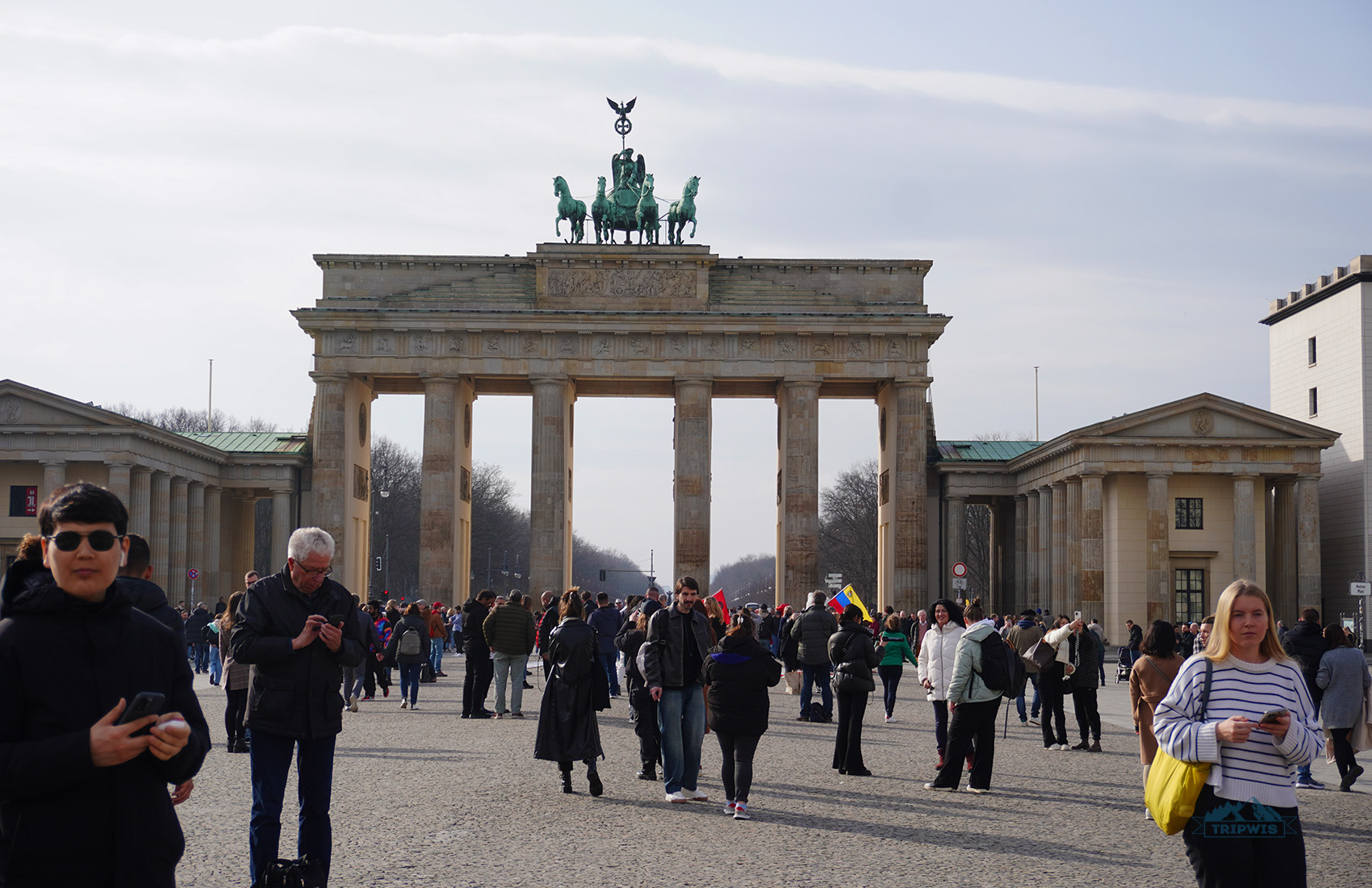
The Brandenburg Gate is considered to be the symbol of unified Berlin — its grandeur and pure power is transcending from the neo-classical architecture into the air around it, making it the first stop a tourist needs to make on our list of Cold War sites in Berlin.
- Back in the days, the Gate was located in an exclusion zone in an arc of the Berlin Wall. Nobody could access the Gate until the fall of the Wall.
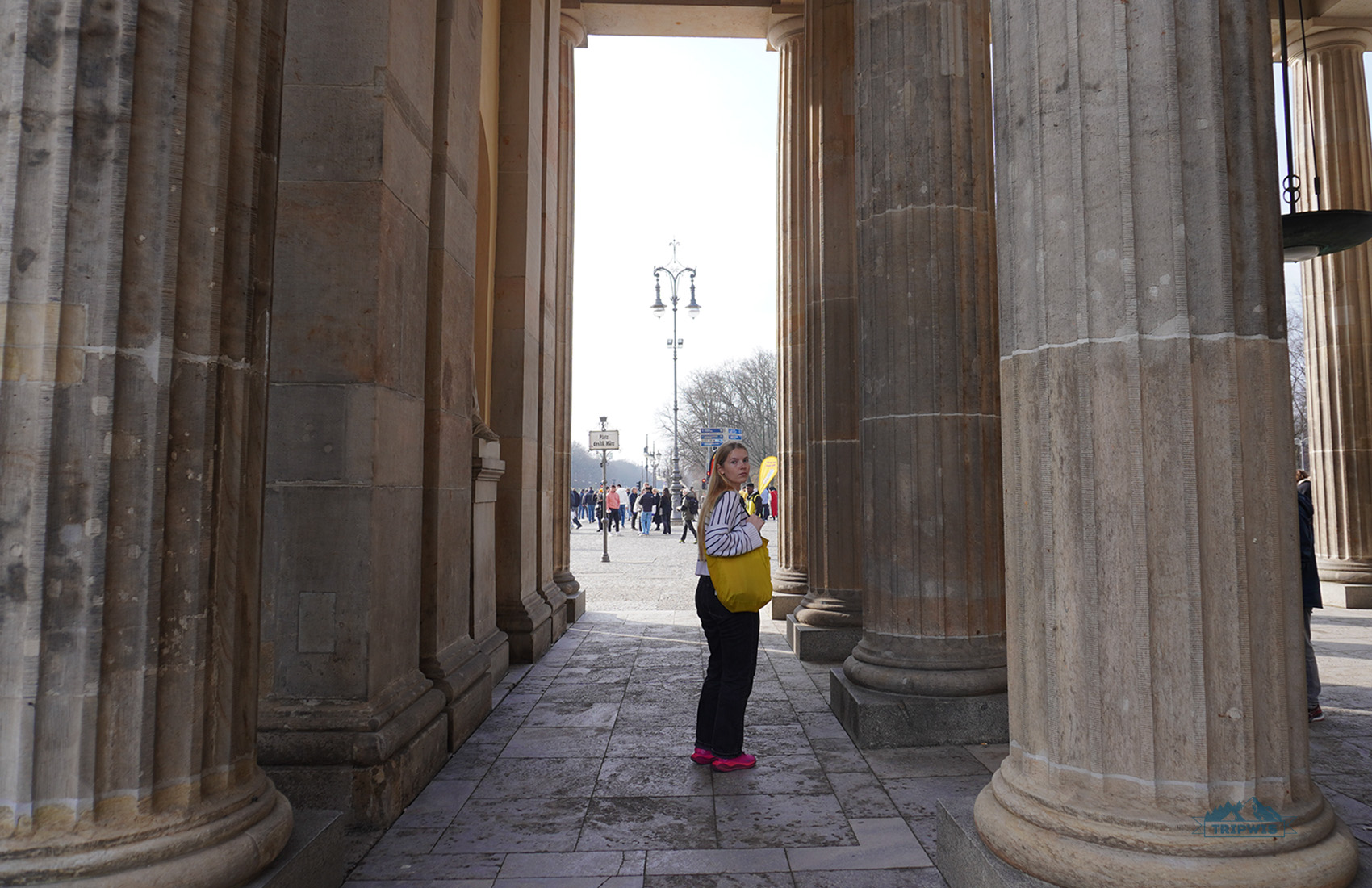
Crowned by the Quadriga statue depicting the goddess of victory driving a chariot pulled by four horses, the Gate can make your neck sore from all the looking up you’ll be doing. The Brandenburg Gate is the only preserved city gate of Berlin, which makes it a unique landmark definitely worth your visit.
The site is free: You can walk around the square in front of the gate, look at the buildings of embassies surrounding it, snap pictures of the monument, and maybe grab a bite in the nearby cafes and restaurants. While not being like the other most famous Cold War attractions in Berlin that usually provide tons of historical information upfront, the Brandenburg Gate is still a worthy stop.
Side note: If you choose the right time for your city visit, you can be lucky enough to witness live music in the square, a festival of lights, or New Year’s celebrations that usually are held near the Brandenburg Gate (but not for the New Year 2026 — the whole event is being moved to Hamburg).
Stasi Museum
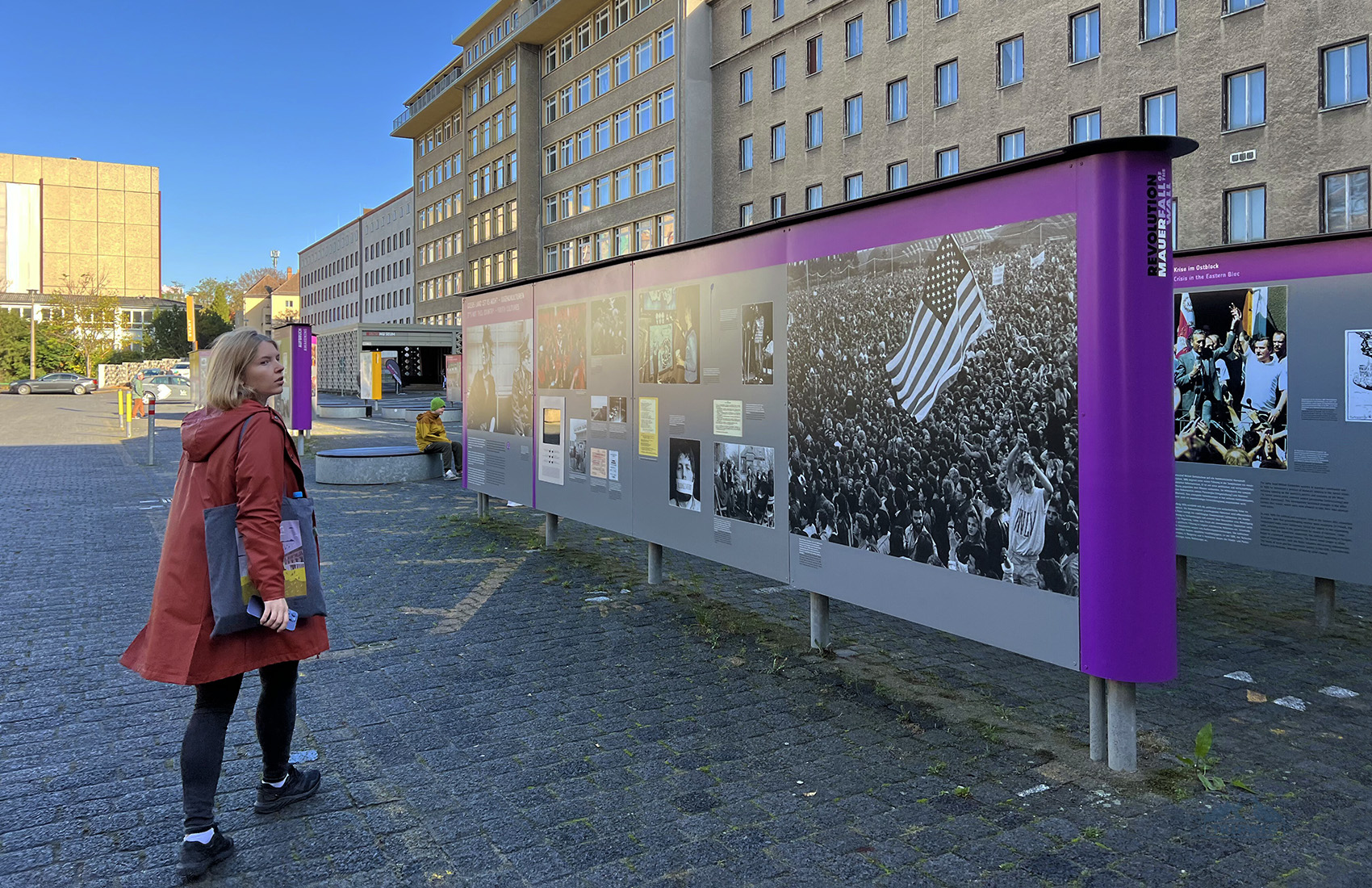
Much like the DDR Museum, the Stasi Museum lets you take a peek into the everyday life of a citizen in East Berlin. However, here the focus is on life under constant paranoia of surveillance, with hundreds of ways the Stasi (East German secret police) got the information on the persons of interest.
The Stasi Museum is located in a desolate area in East Berlin, and is part of a whole complex of buildings put up for the Ministry of State Security in the early 1960s. The main building is where the office of the Minister for State Security can be found now, in an almost untouched state, as part of the Stasi Museum’s three-floor exhibition.
Two other floors are devoted to showing different tools and methods of surveillance used on East Berliners during the Cold War. You can see hidden cameras, tape recorders, microphones and other spy equipment that was widely used to control the population. The exhibition also details first-hand accounts of the victims of wire-tapping, as well as work reports of those working in the building, doing the tapping.
The museum is a unique experience and a treasure trove of information concerning the GDR state of power during the Cold War. The museum was opened to the public in 1990, with most of its inner furnishings intact, like original Mad Men-esque typewriters and telephones. Other than that, the actual Stasi archives, detailing information on thousands of East Berliners are no longer in the museum. It is worth noting that the archives are so extensive that they’re still being catalogued today. Can you imagine the sheer amount of data collected? Blows your mind!
Being one of the most well-maintained places to see Cold War sights in Berlin, the Stasi Museum should definitely be on your itinerary, even if you’re in Berlin only for a couple of days.
📍 Opening times: Monday through Friday: 10 a.m. – 6 p.m.; Weekend, holidays: 11 a.m. – 6 p.m.
📍 Ticket price: €12 per adult; €9 for a reduced ticket; kids under 12 enter for free
Berlin Wall
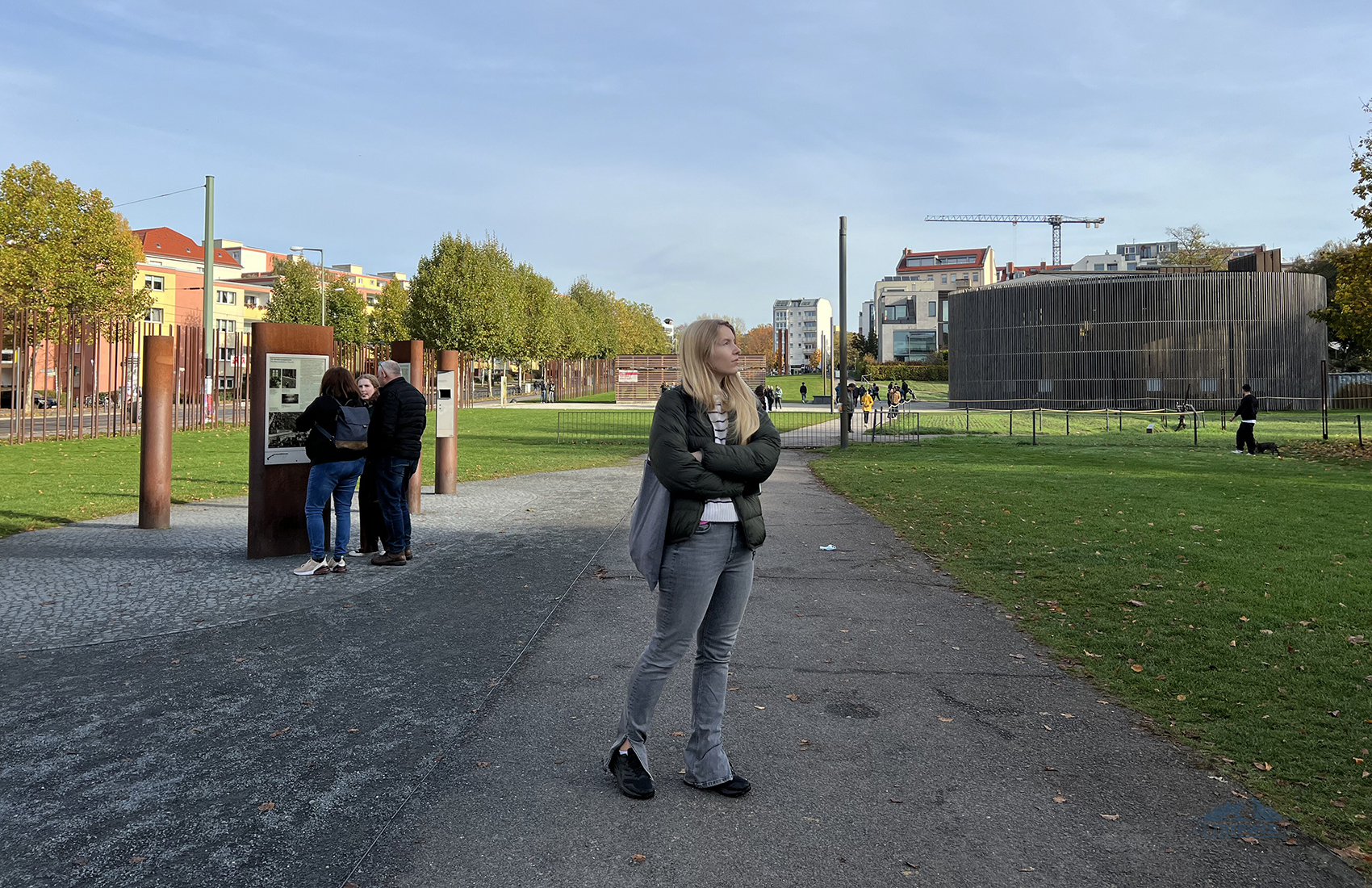
Out of all wall-related spots in Berlin, the Memorial in Bernauer Strasse had the biggest impression on me
Last but not least, the Berlin Wall is arguably the most famous of all Cold War sites. After all, it was the thing that separated the city into East and West Berlin from 1961 until 1989, for so many hard years.
Before the wall was built, Berliners could walk freely to and from its East and West sides, to go to the store, the theatre, etc. Public transport could get you from one part of the city to another. Once the wall was built, the free flow of citizens came to a halt. The three main checkpoints were erected — Alpha, Bravo and Charlie (eventually, 12 checkpoints were made along the wall).
In all, at least 171 people were killed trying to escape from East Germany to West. A lot of attempts (around 5,000) were successful though — people had to get creative, jumping from windows of adjacent buildings, digging trenches, scaling the barbed wire and even speeding through the checkpoints in low convertibles (true story).
Even though the period was characterized by severe hardships of average citizens, many (including John F. Kennedy) used to note that “a wall is a hell of a lot better than a war”.
Parts of the Berlin Wall can still be found throughout the city and its suburbs. The border encircling West Berlin used to be 167.8 kilometers (104 miles) long. When the wall finally fell, thousands of people stormed the checkpoints, with many using tools to manually chip away at the wall, and later using heavy machinery to destroy it.
Places to see the Berlin Wall
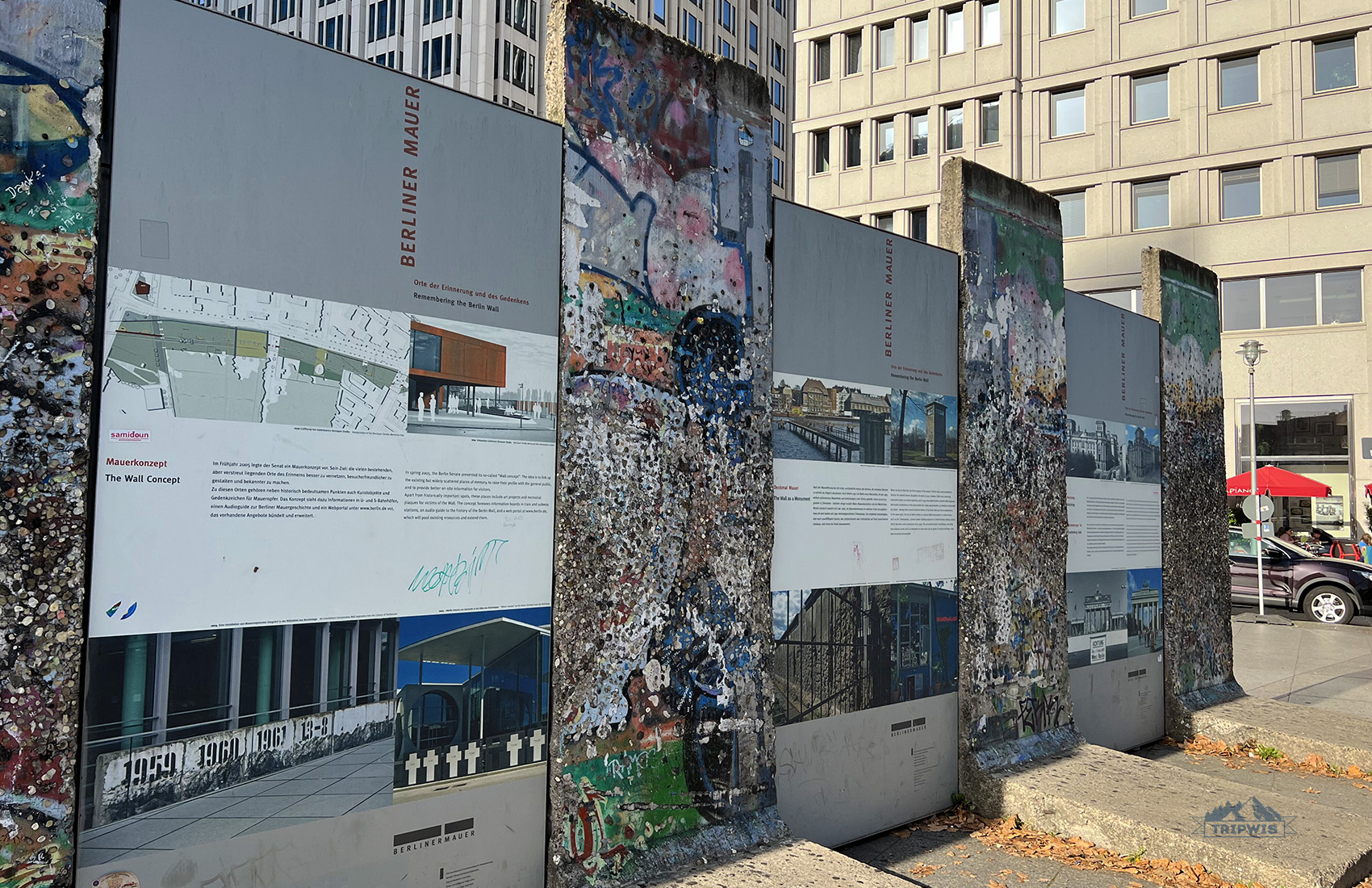
This is “Teil der Berliner Mauer” (as pointed on Google Maps) located right at the Potsdamer Platz
It bears repeating the point: The Berlin Wall is the most significant symbol of the city’s prolonged division. Its last remaining traces include, but are not limited to the mentioned above:
- East Side Gallery,
- Topography of Terror (a spectacular museum and former headquarters of the Gestapo),
- the Berlin Wall Memorial in Bernauer Strasse (unique open air exhibition, we highly recommend it for visiting),
- the graffiti-covered Mauerpark,
- the Berlin-Hohenschönhausen Memorial — a former Stasi prison.
The pieces of the Wall can also be traced back to more desolate areas in Berlin-Reinickendorf (almost 80 meters of the original wall thought to be an ordinary border for many years after the reunification), Spandau (three remnants on Spandau’s border to Brandenburg), Gutspark Groß Glienicke (a sole piece of the Berlin Wall nestled on the wide meadow in the western part of the park), at Invalids’ Cemetery (several relics of the Wall still exist here), and at the Old St. Hedwig Cemetery.
It’s easy to get lost in a place you’ve never been before, especially if you’re looking for more remote and hidden-from-view locations like these ones. One possible solution to the problem is finding a knowledgeable guide to take you places. There is a coveted Guided Bike Tour of the Berlin Wall and Third Reich that helps its partakers explore the sites along the wall in search of its last remaining artifacts.
Things to know before traveling to Berlin
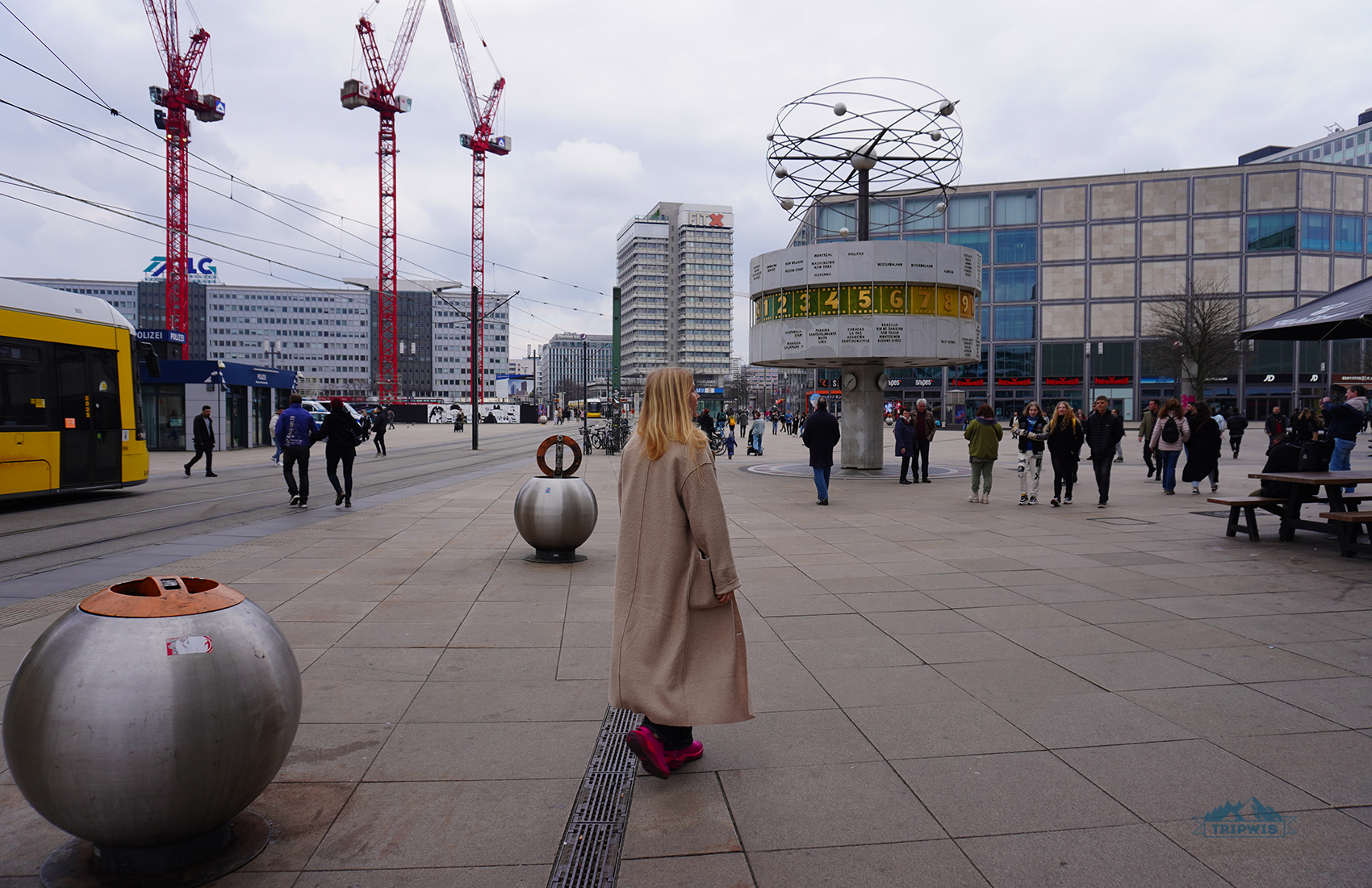
Berlin is one of the most dynamic cities on earth: Even after multiple trips we’ve taken to the German capital, there are still countless discoveries to be made on any particular side of the travel experience in the city. Berlin just doesn’t stop evolving, while still leaving room to explore its past, paying the memories their due diligence.
Thankfully, you don’t need to go into the trip blindly: All of our hands-on experience and tons of research wasn’t for nothing, as we’ve created numerous guides to help you navigate Berlin’s multifaceted space.
Here’s the breakdown of the things you must be familiar with at least at the base level, guaranteeing your vacation to be a smooth sailing all the way:
- Where to stay in Berlin — the point where every trip planning starts, it sets the tone for your entire journey. Quick note: We’re impartial to Kreuzberg — start here if you don’t feel like getting into the weeds of Berlin’s top neighborhoods, you won’t be sorry!
- Our three-day Berlin itinerary — even though we’ve established that Berlin has lots of unique destinations to offer (proven by all the locations we’ve even mentioned on here), some people are still under impression that the city sites start and end with Reichstag
- Other things to know about Berlin — for example, a problem with… public restrooms!
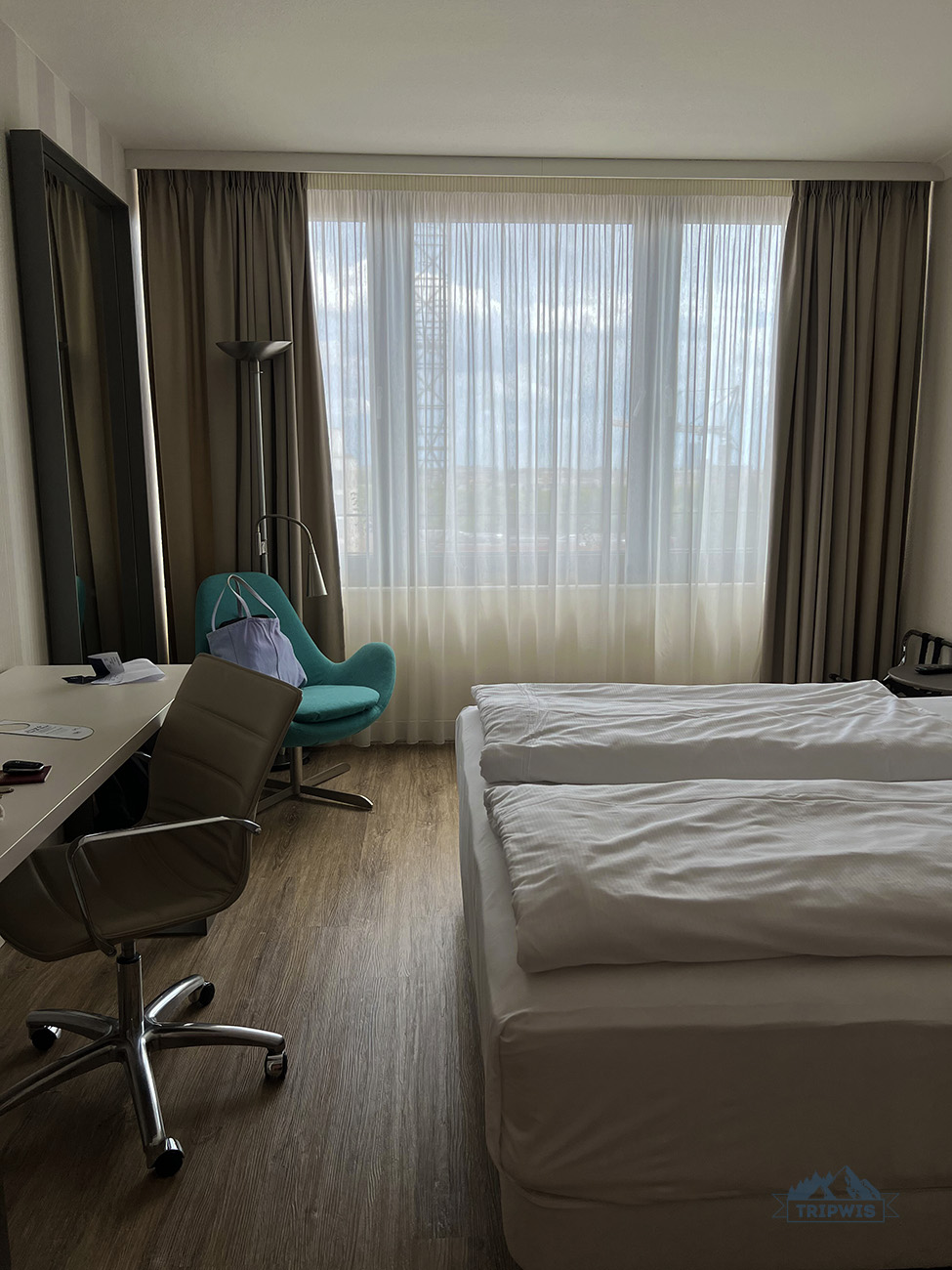 |
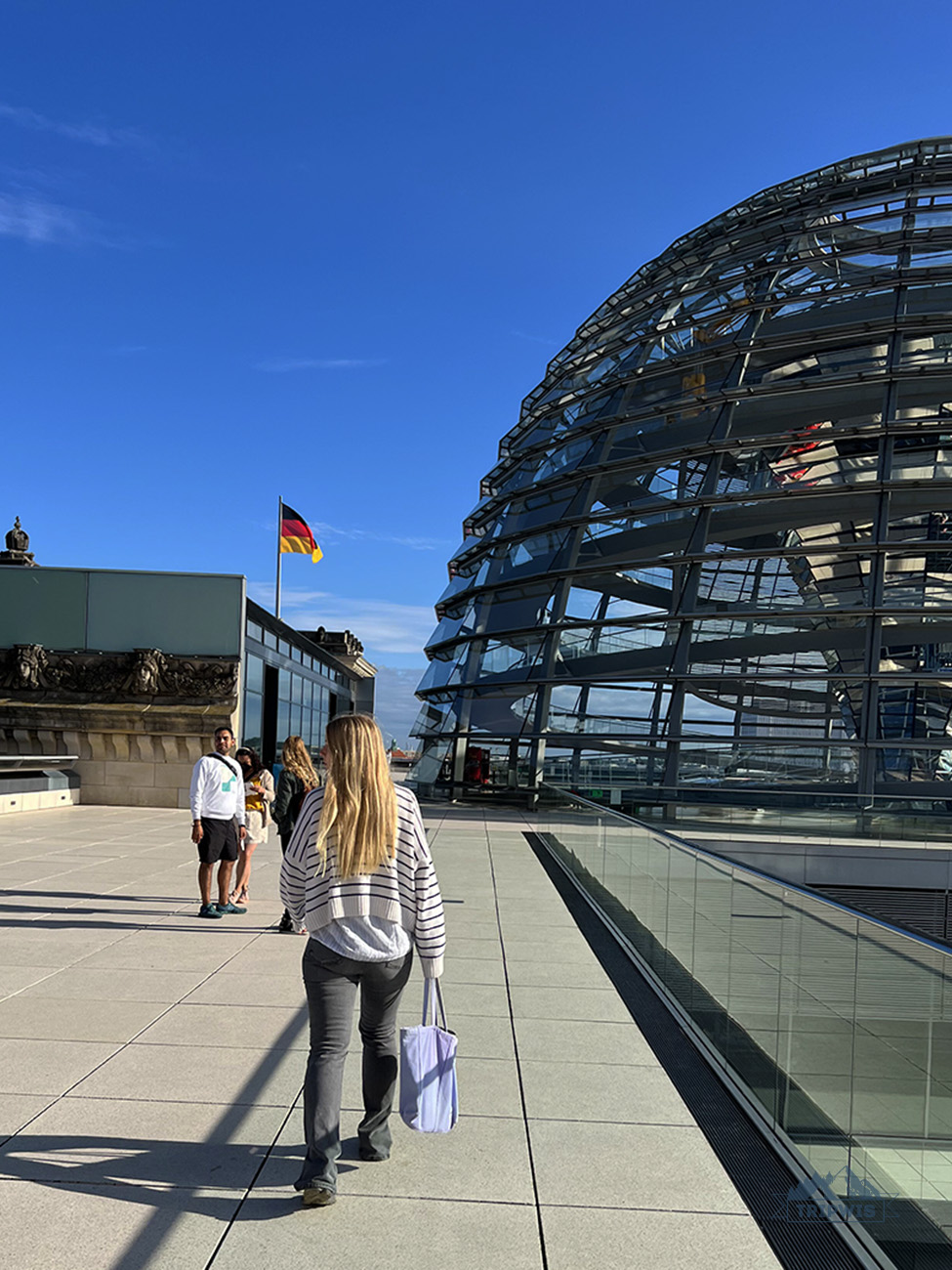 |
Little do they know that even if you spend a month traversing the city’s every street, you will still only scratch the surface of what Berlin is known for. One could only hope for these many vacation days, so an ordinary traveler has to pick and choose their battles.
Here’s where we come in with the more detailed and focused recommendations:
- Read our breakdown of Berlin’s best museums — it can help you plan your personal itinerary in a more efficient manner.
- And we cannot forget about indulging: Every holiday should come hand-in-hand with a little weight gain and a lot of treating yourself! Our guide to Berlin’s best coffeeshops sets the bar for the greatest time you will spend getting a coffee and dessert in-between sightseeing in the capital.
With that, we feel like we’ve given you enough information so that you could make informed decisions about your Berlin getaway. If we somehow missed a particular topic you had in mind, feel free to drop us a line in the comment section below. Until then, Auf Wiedersehen!
